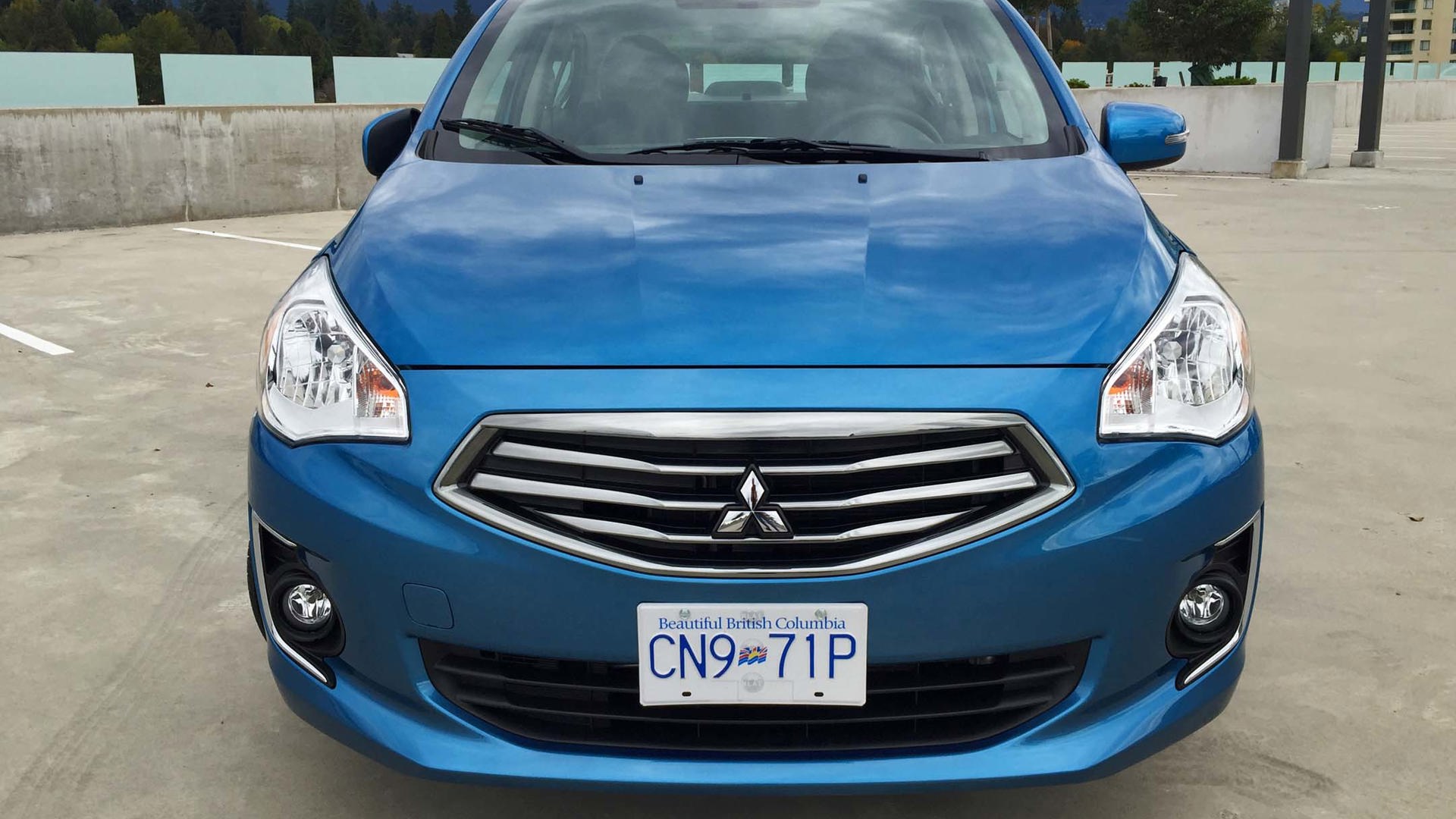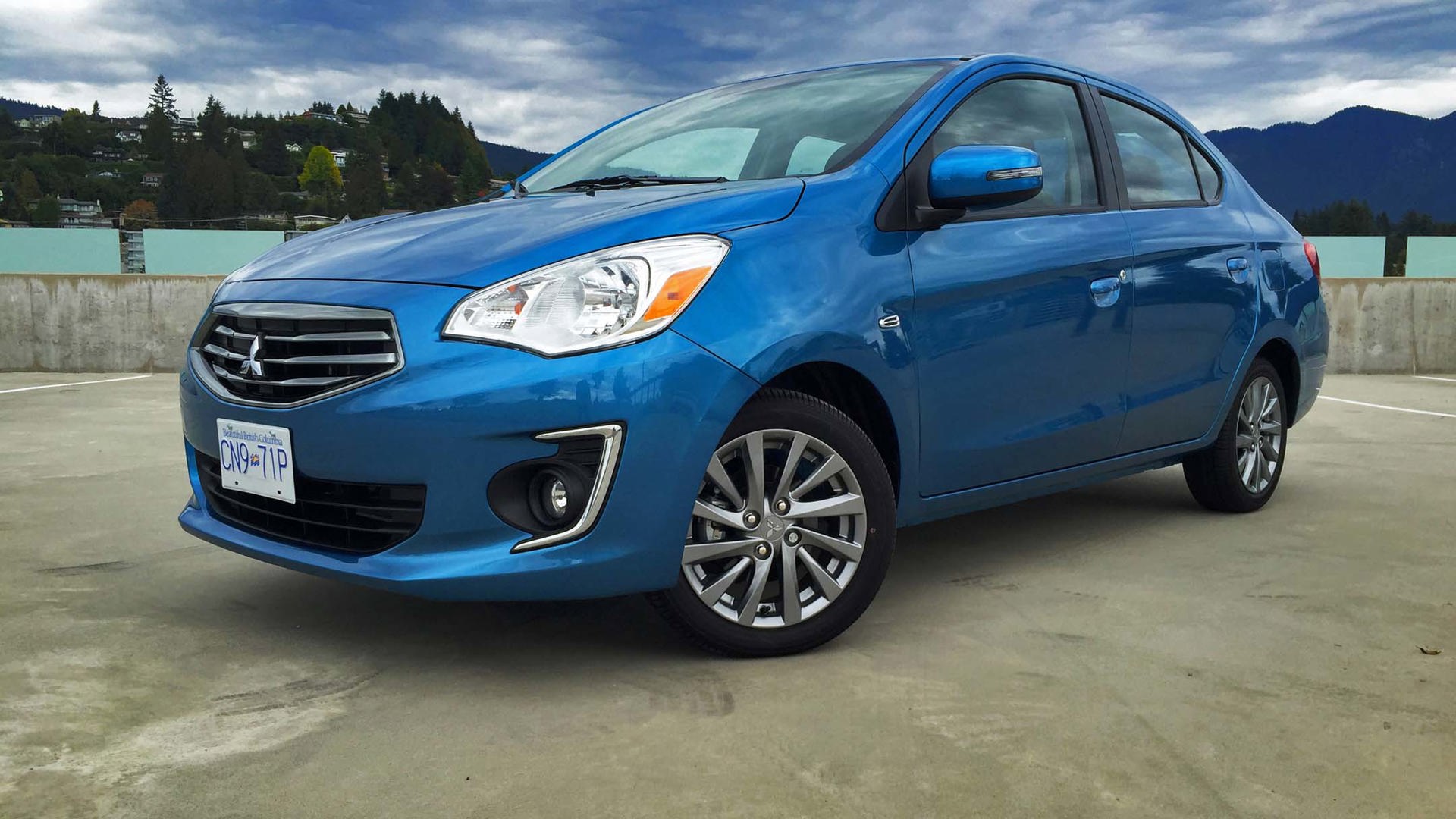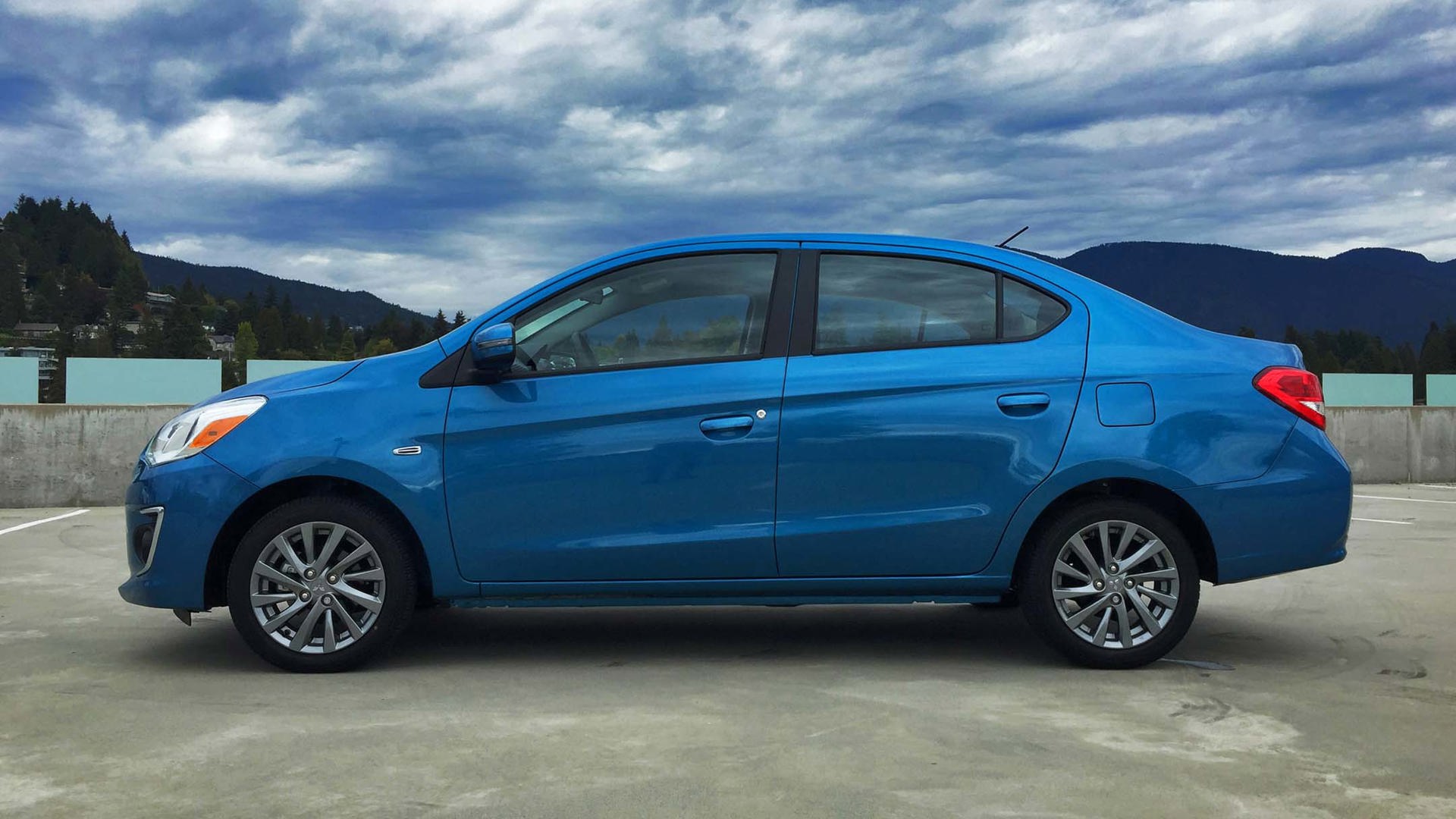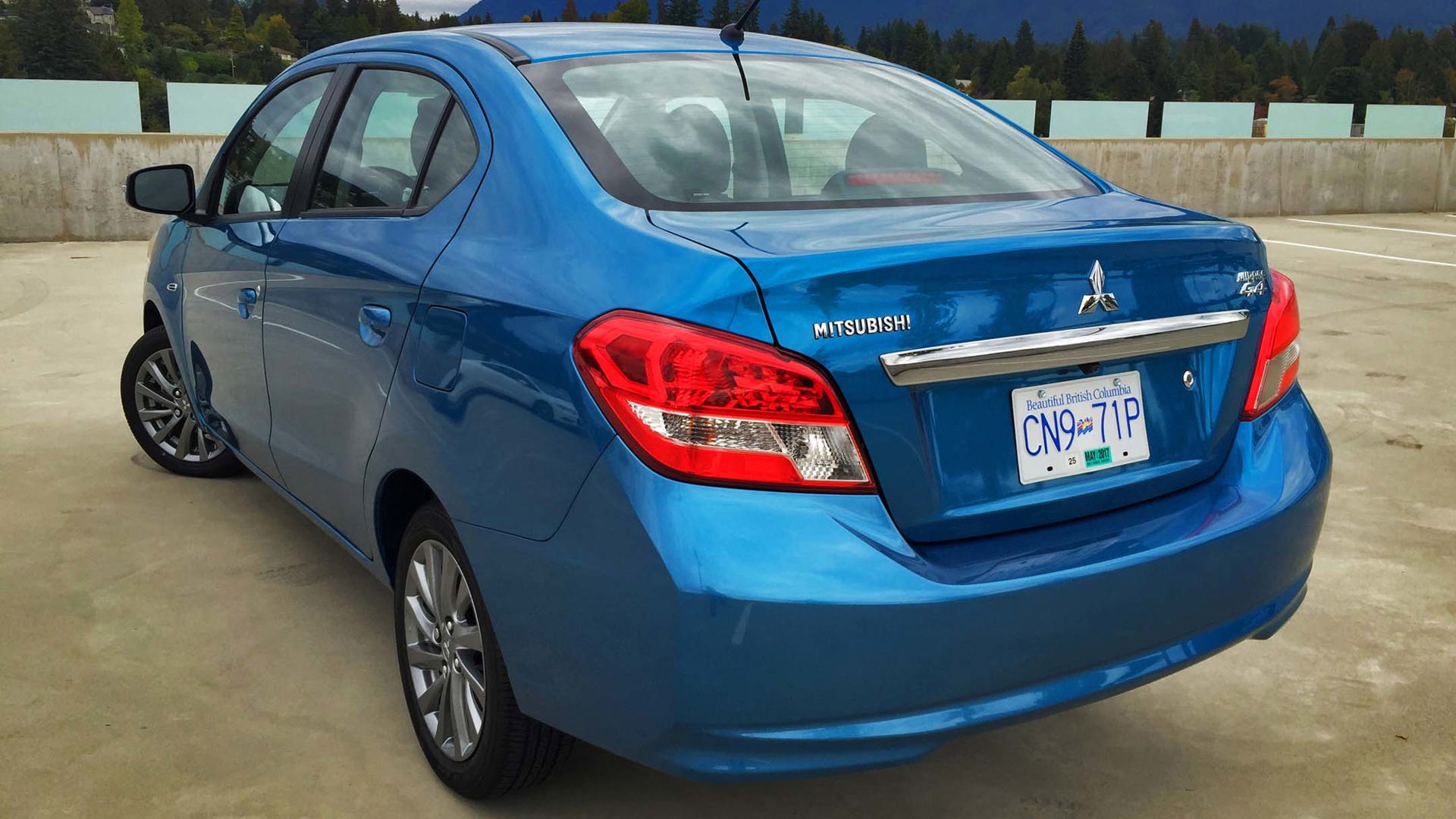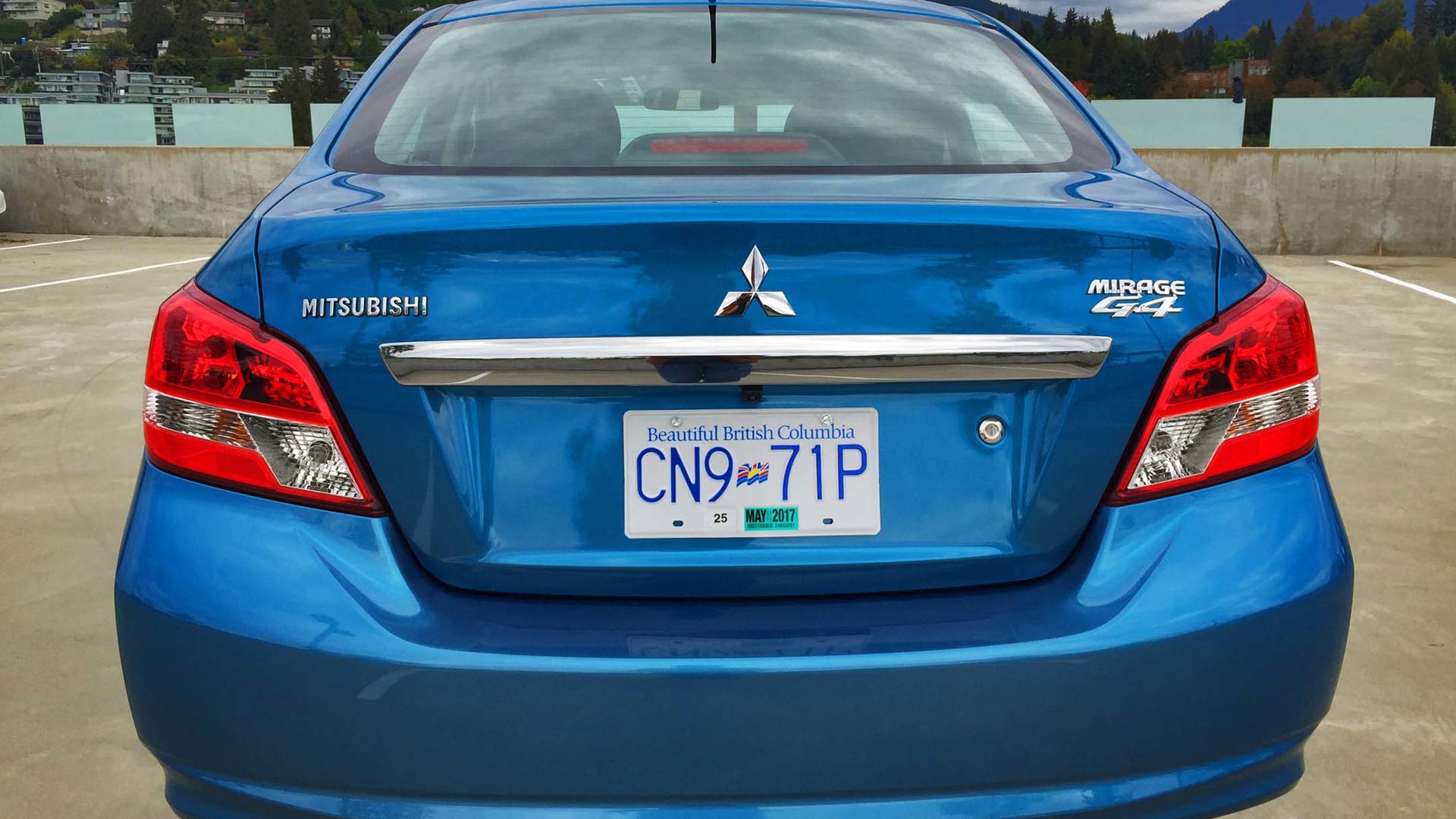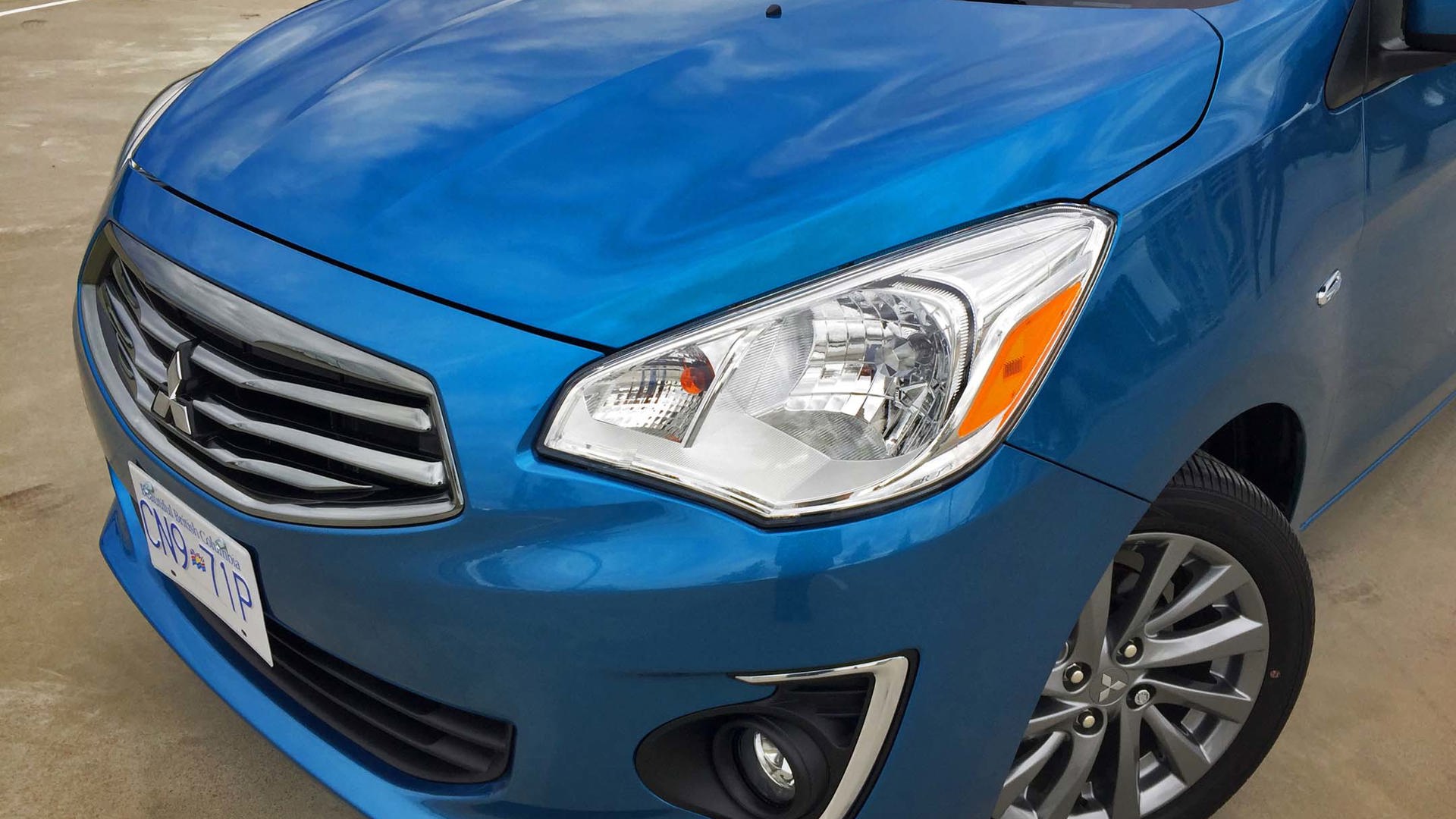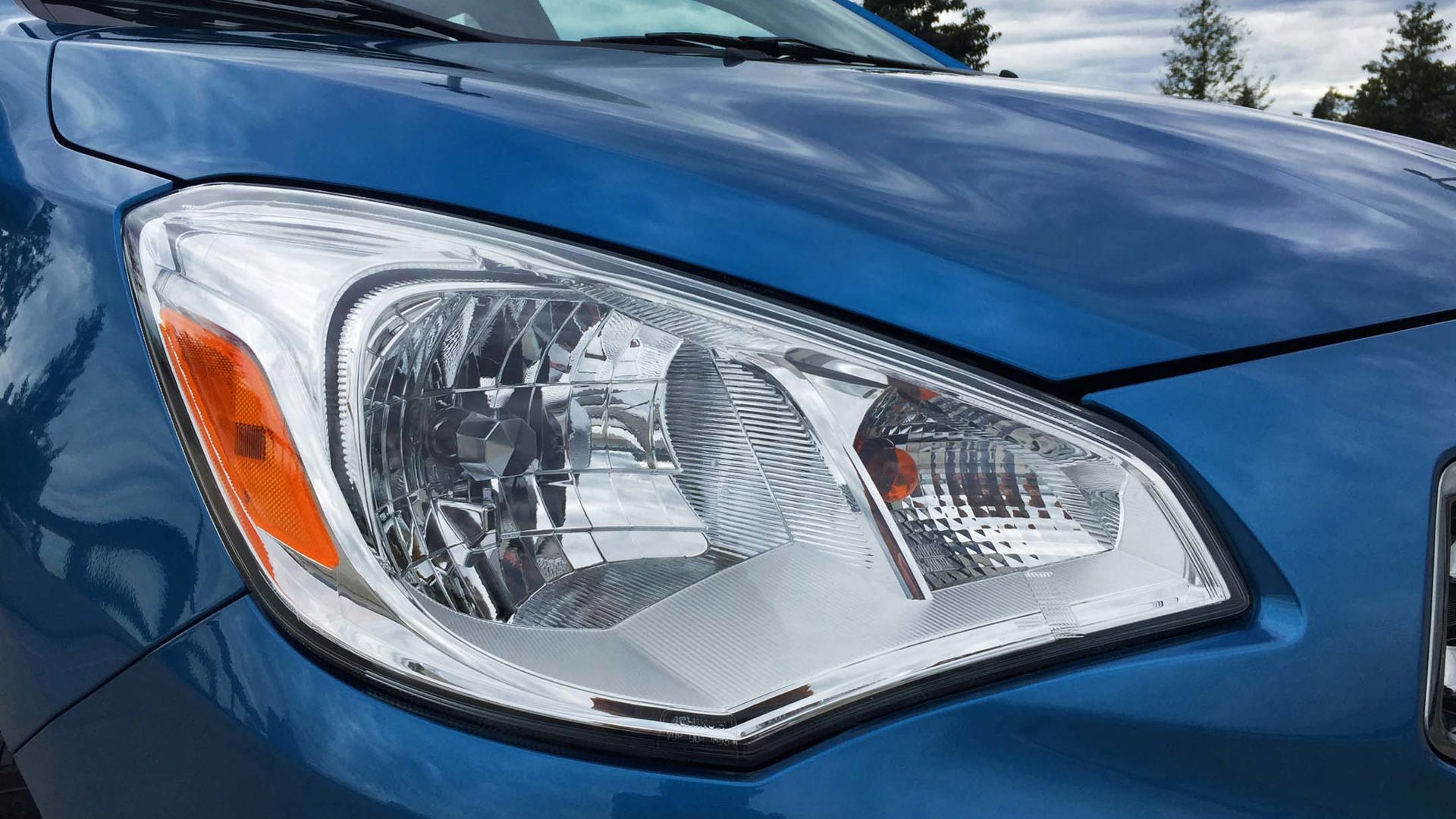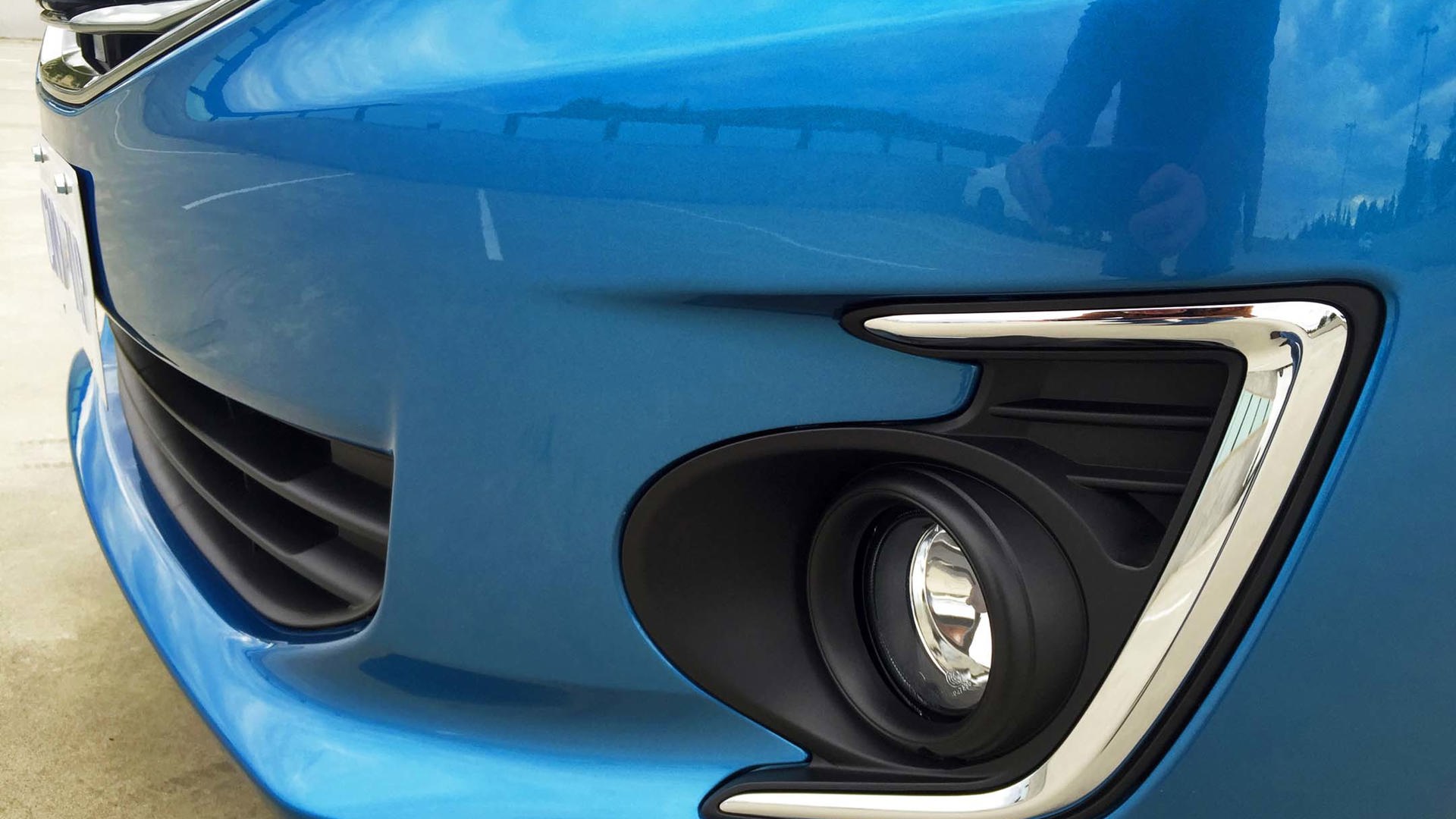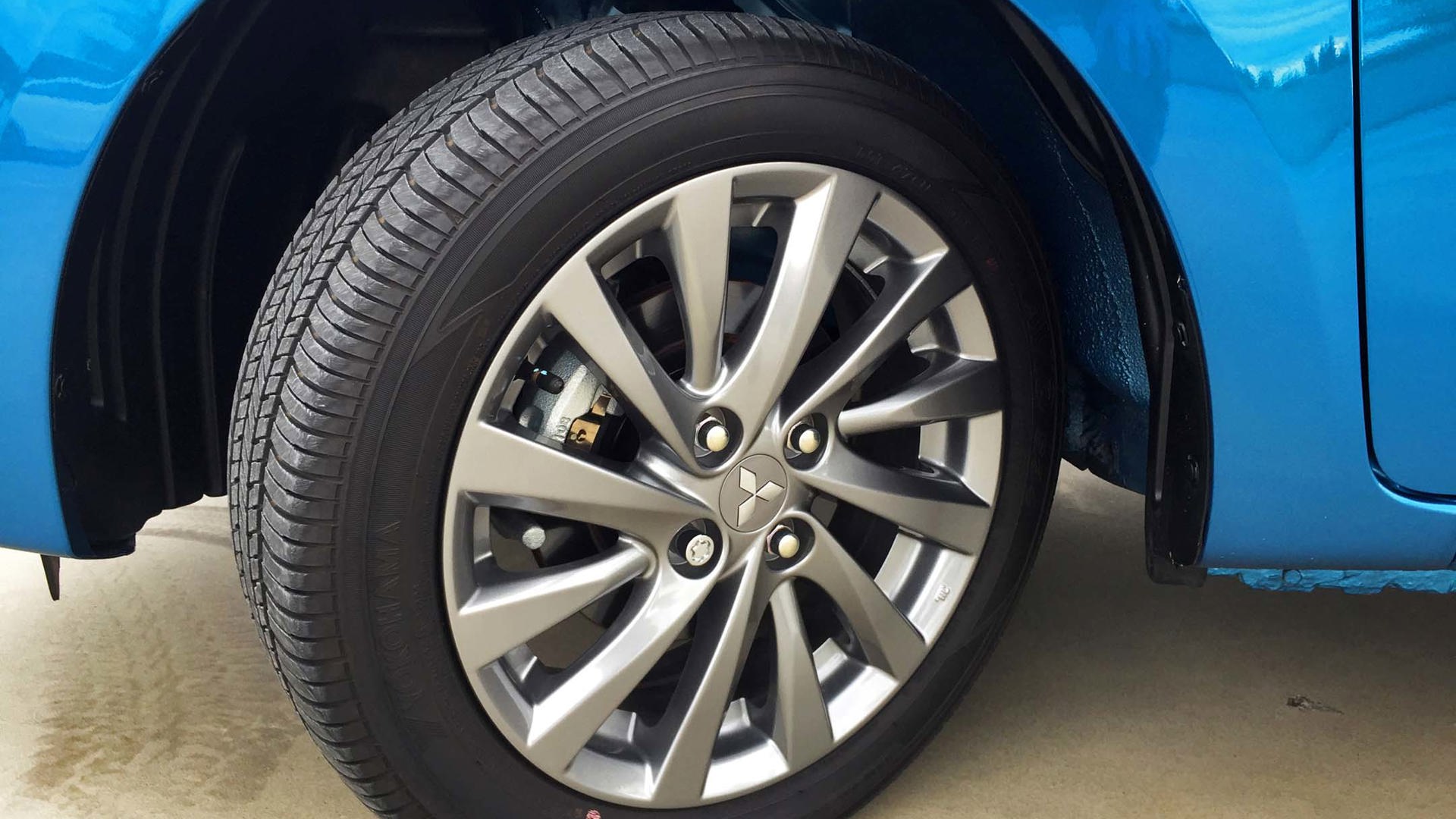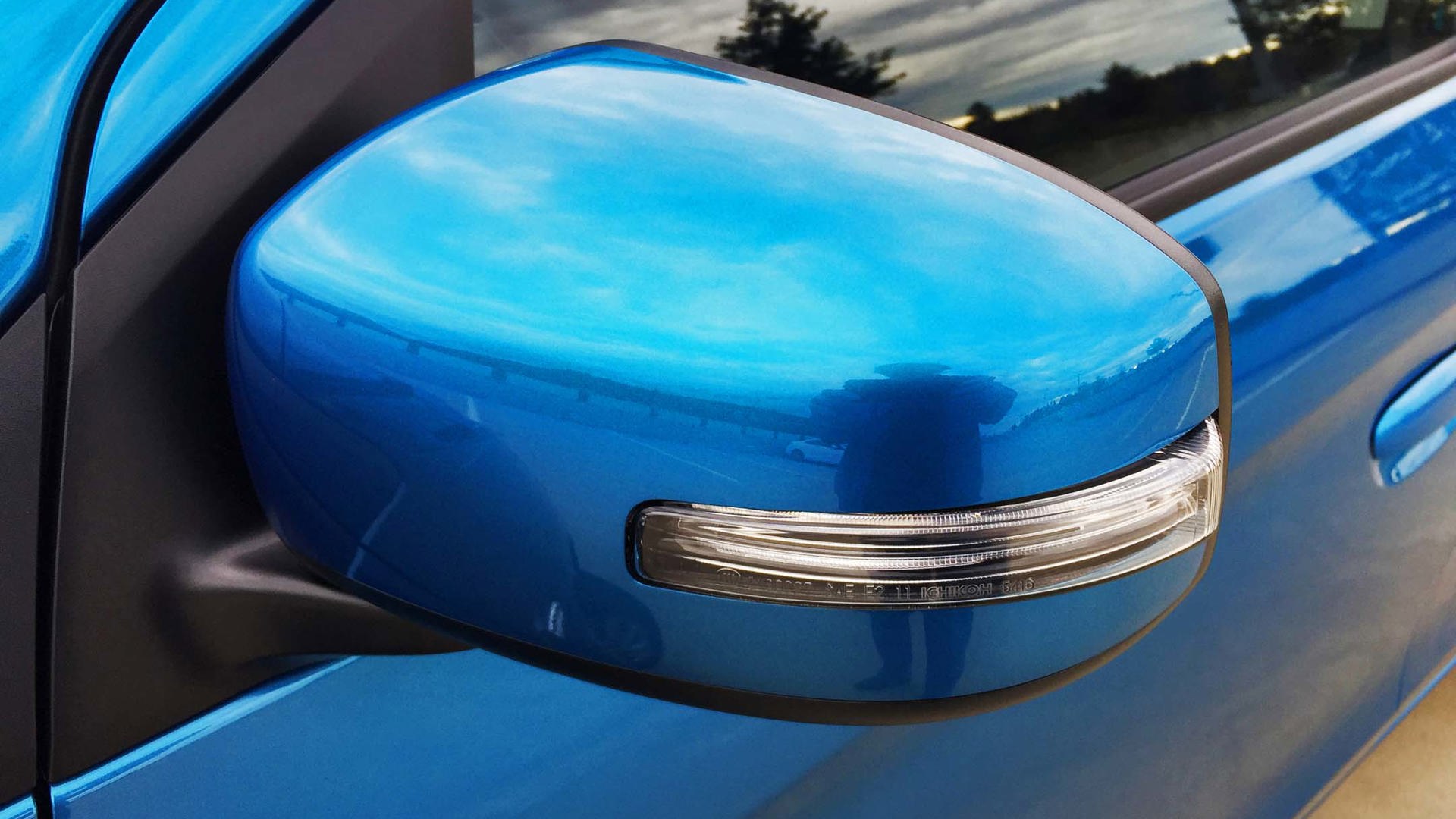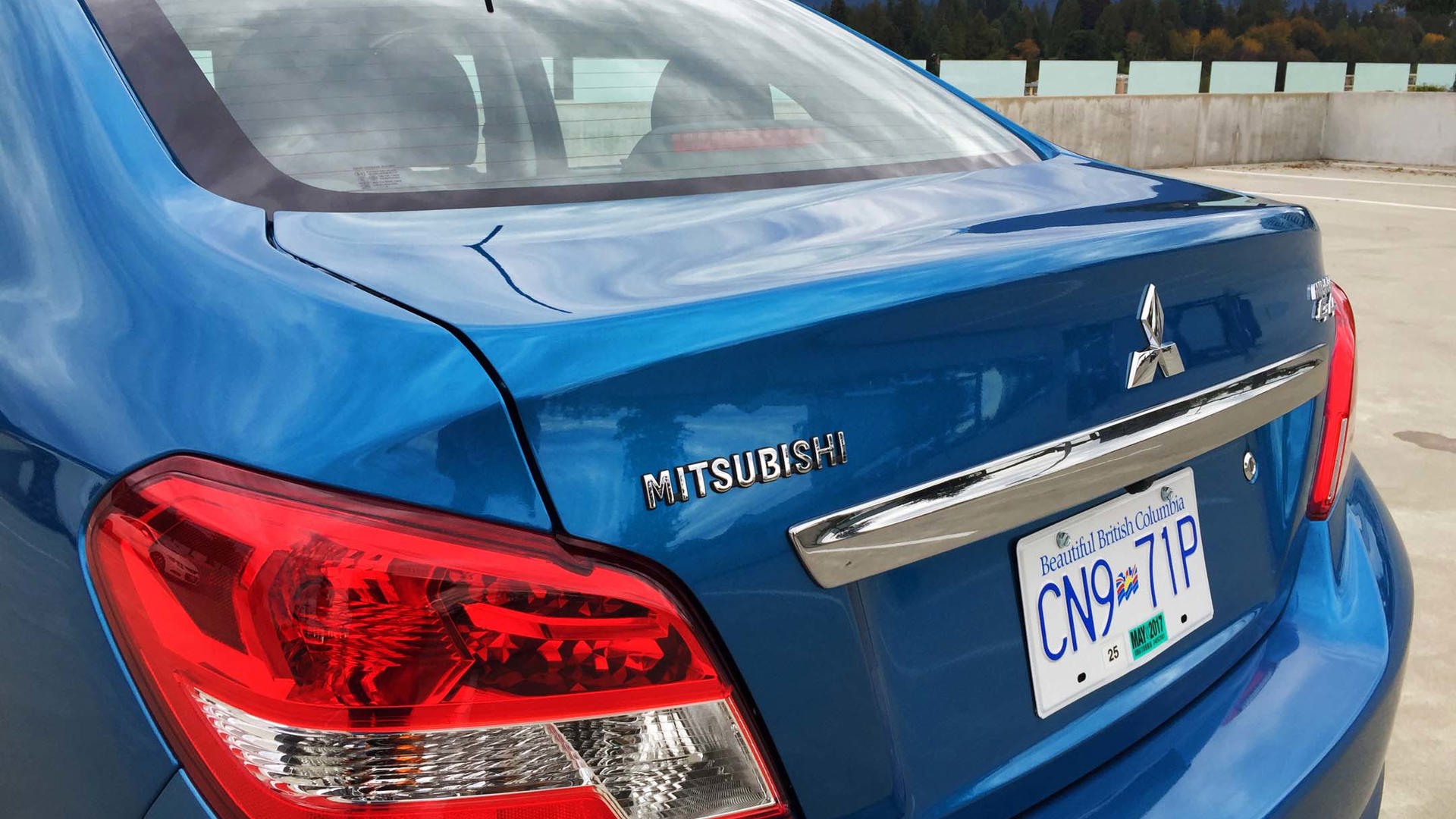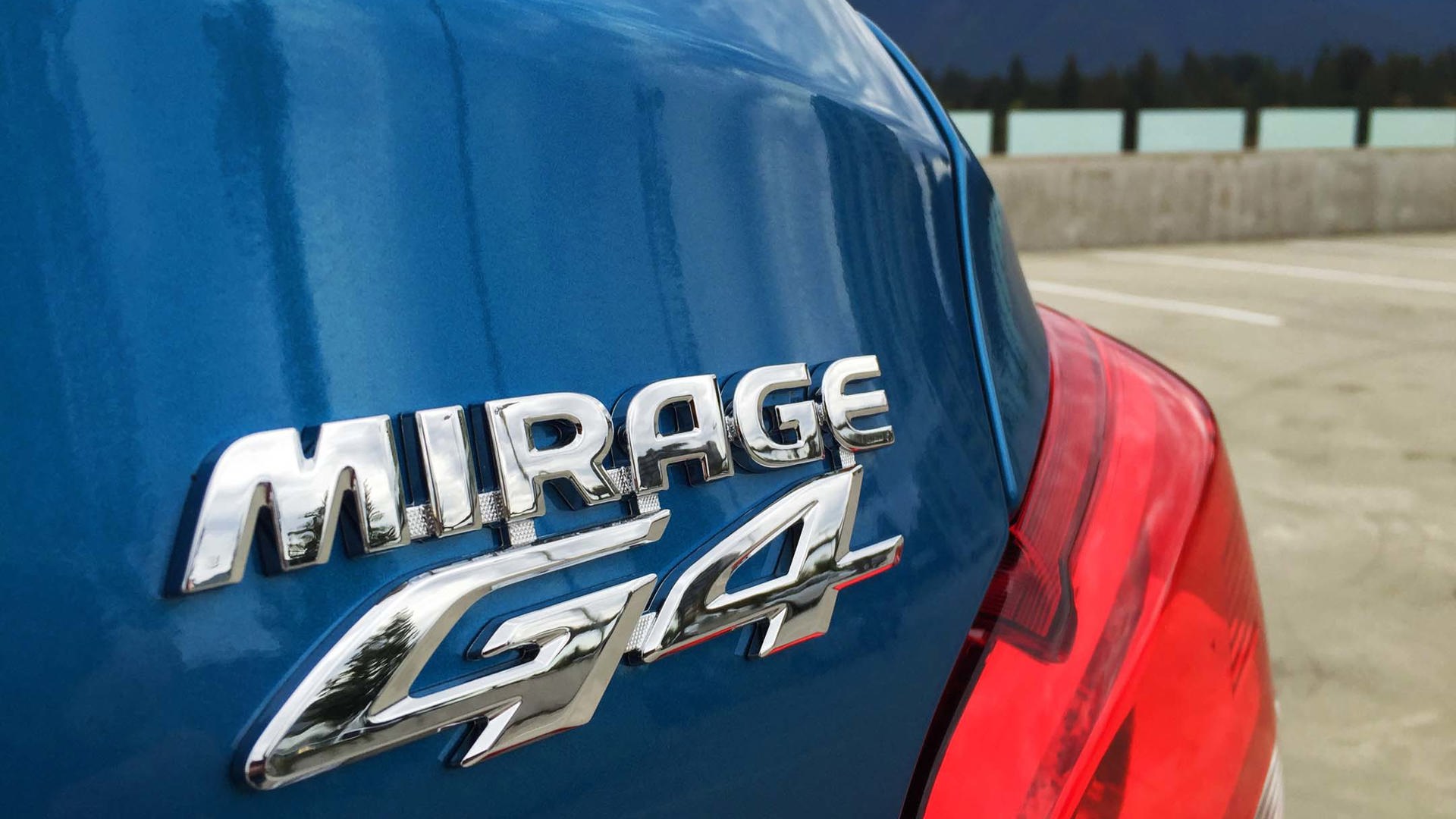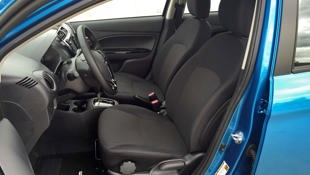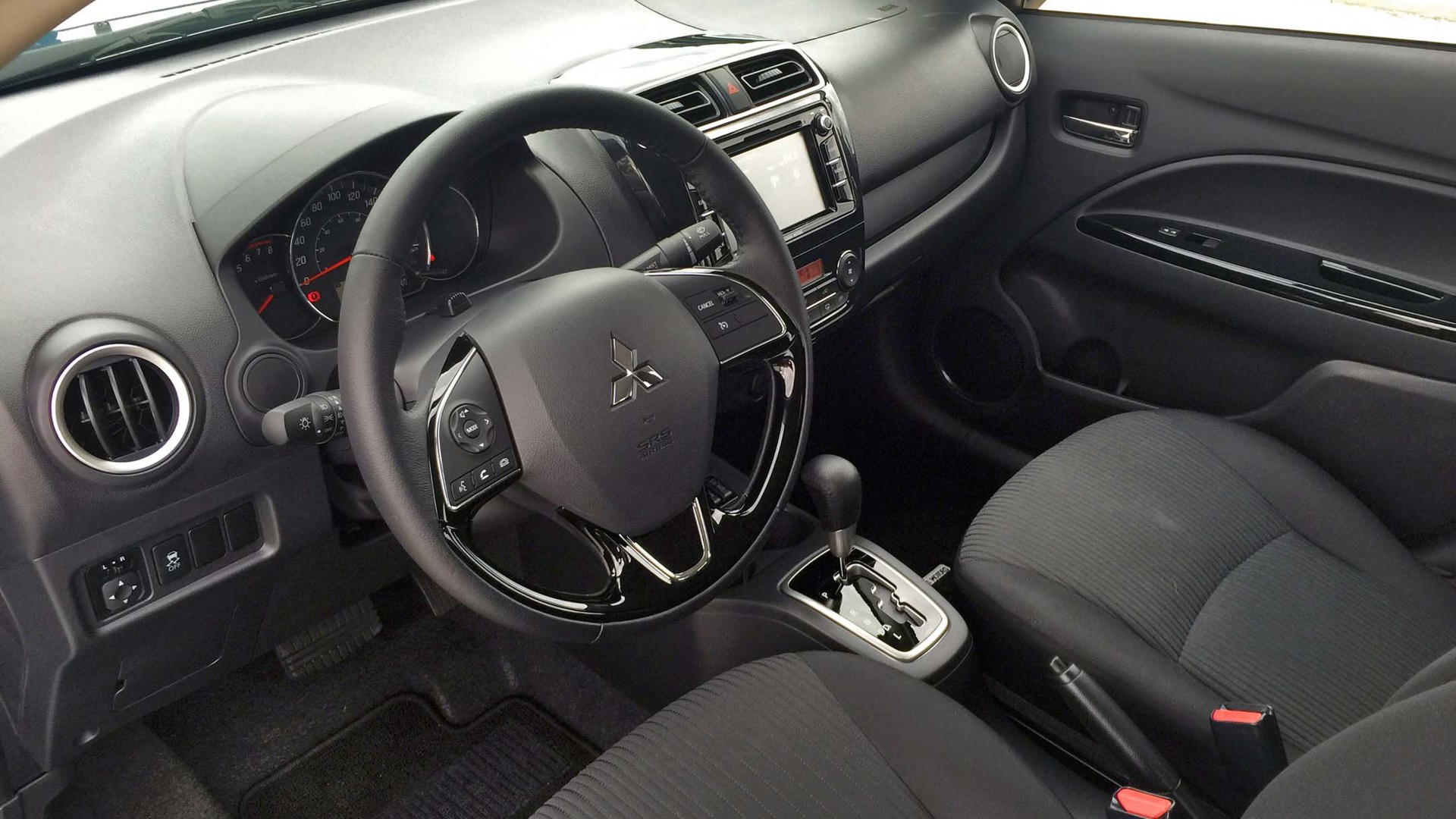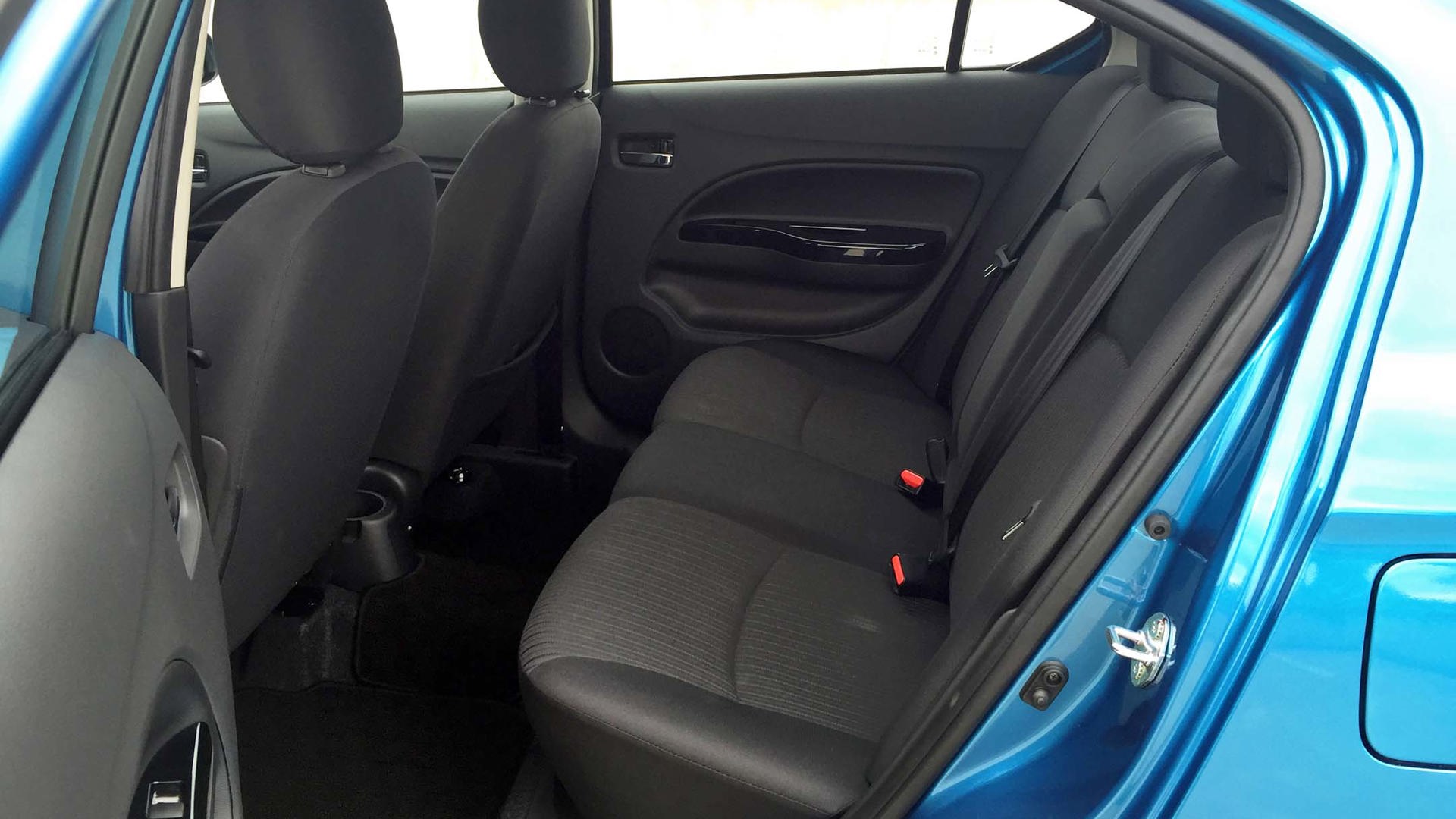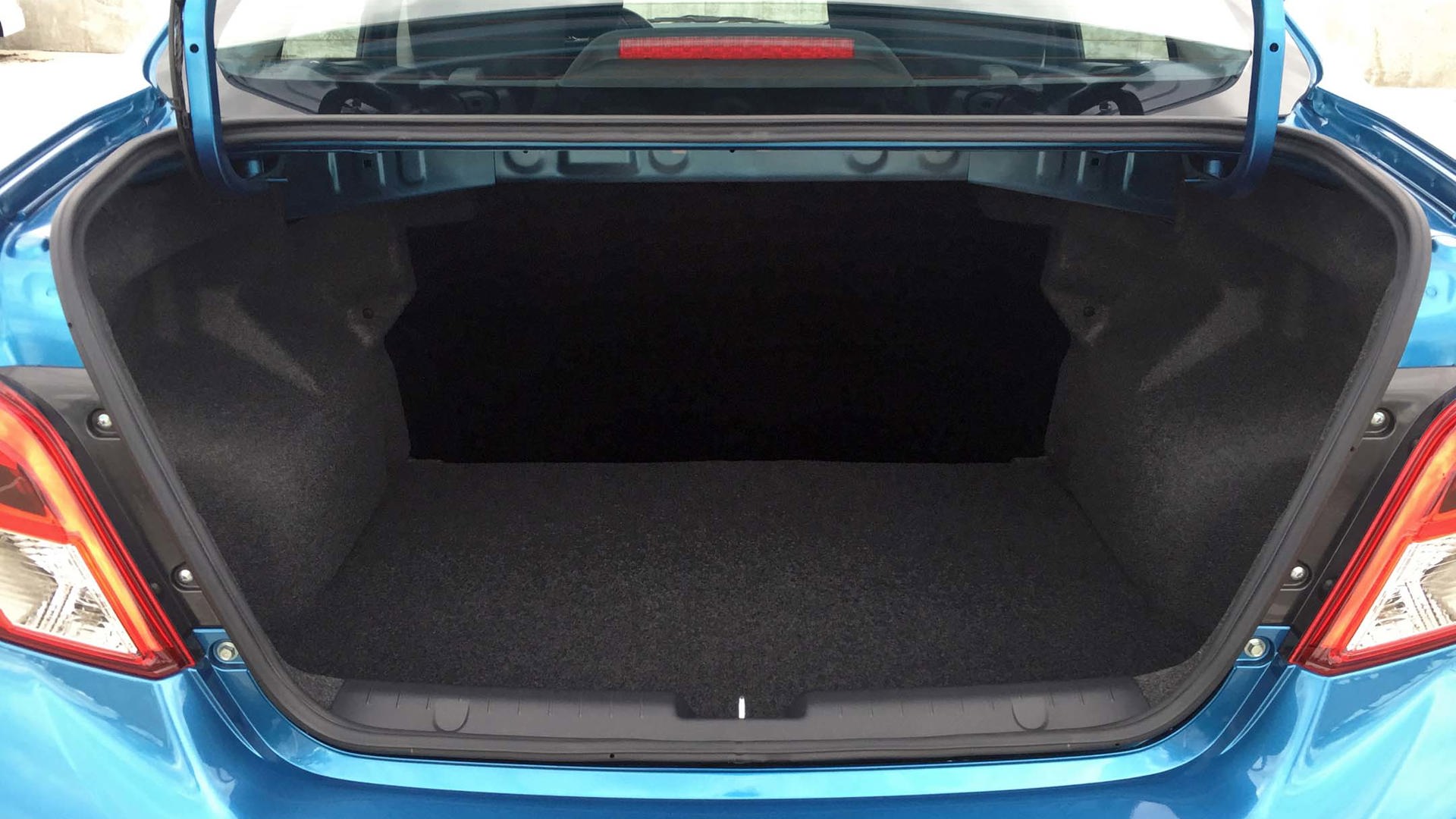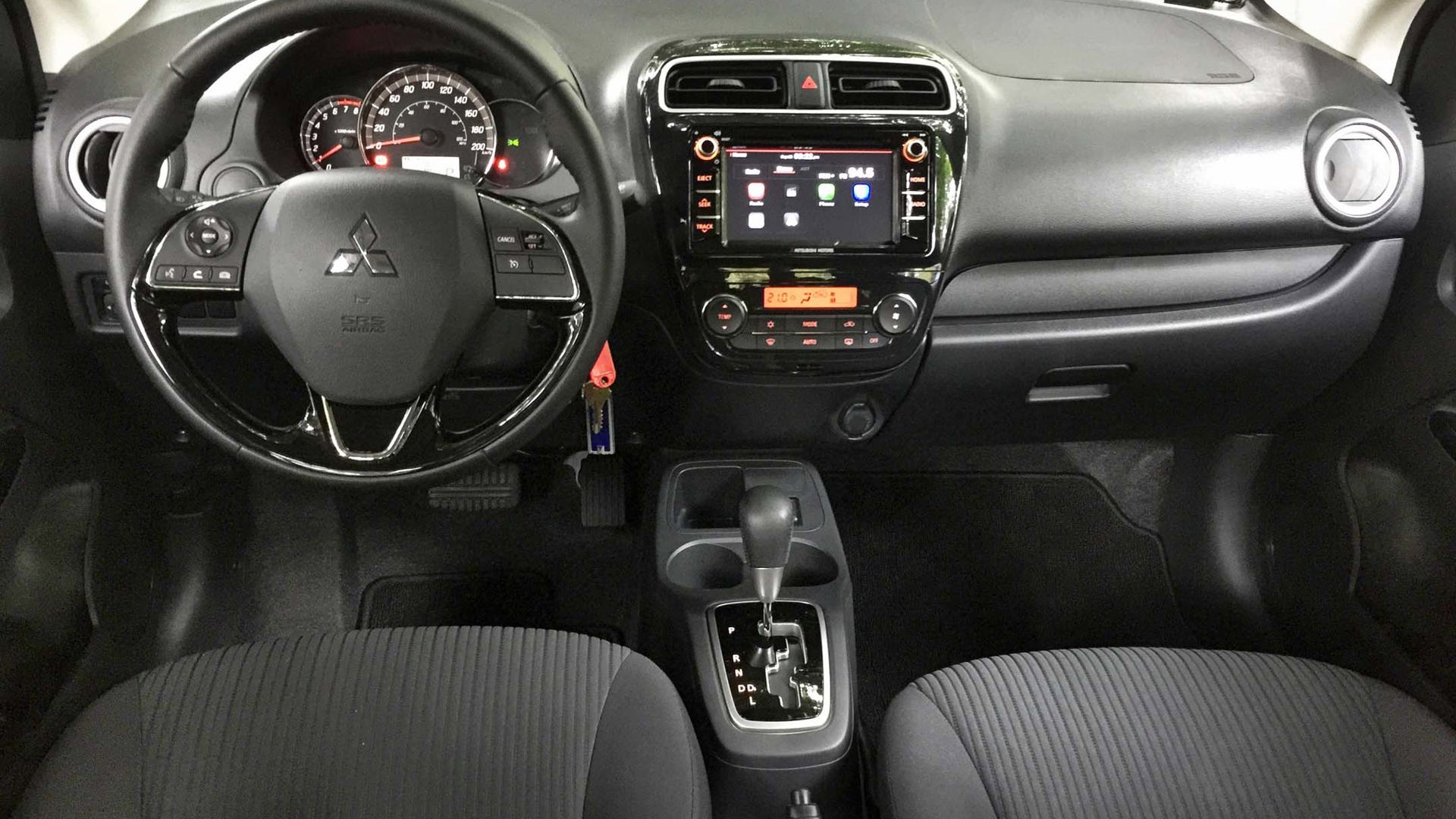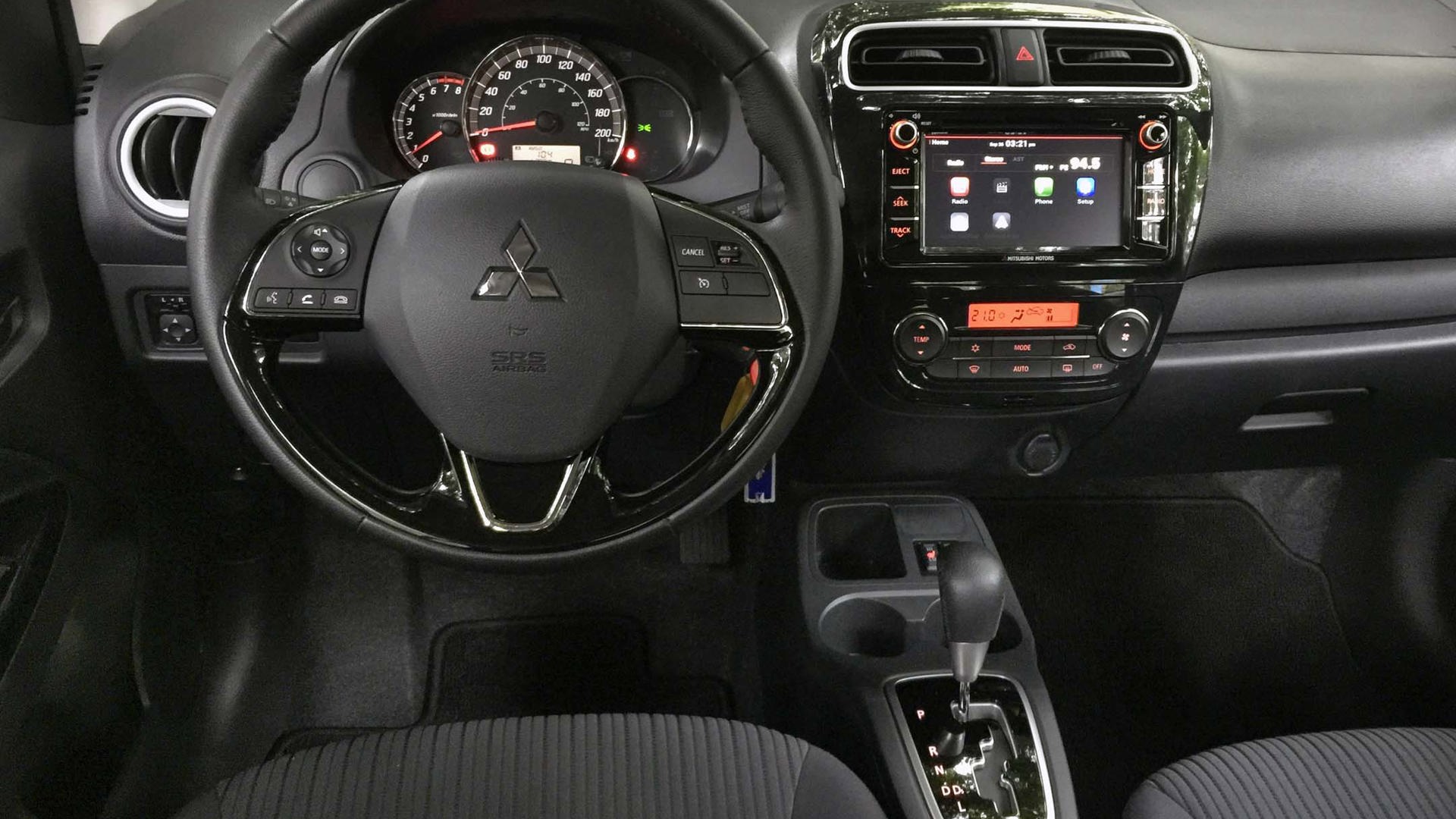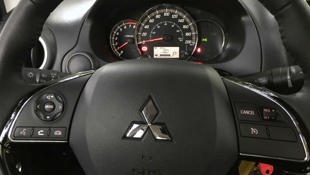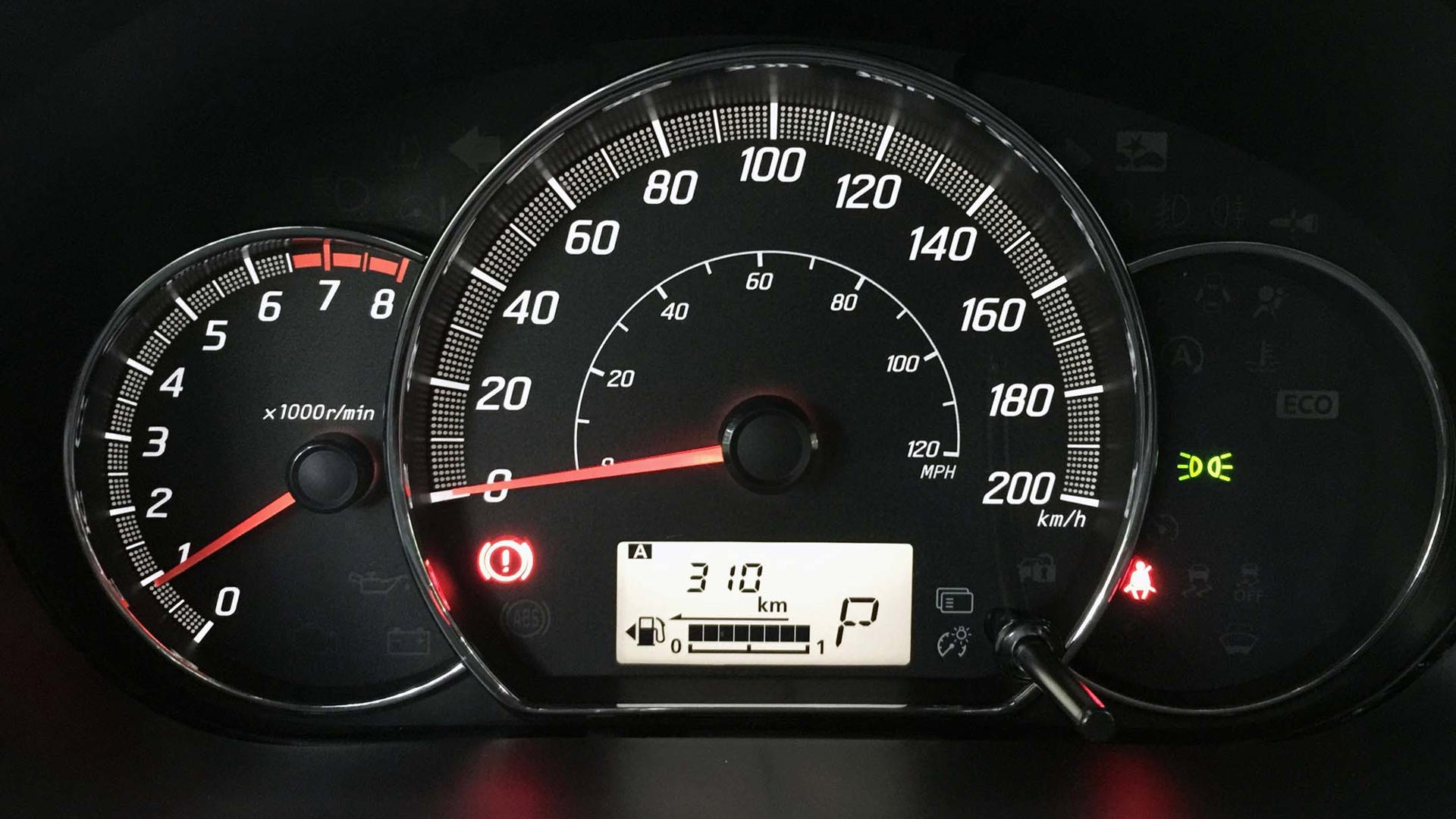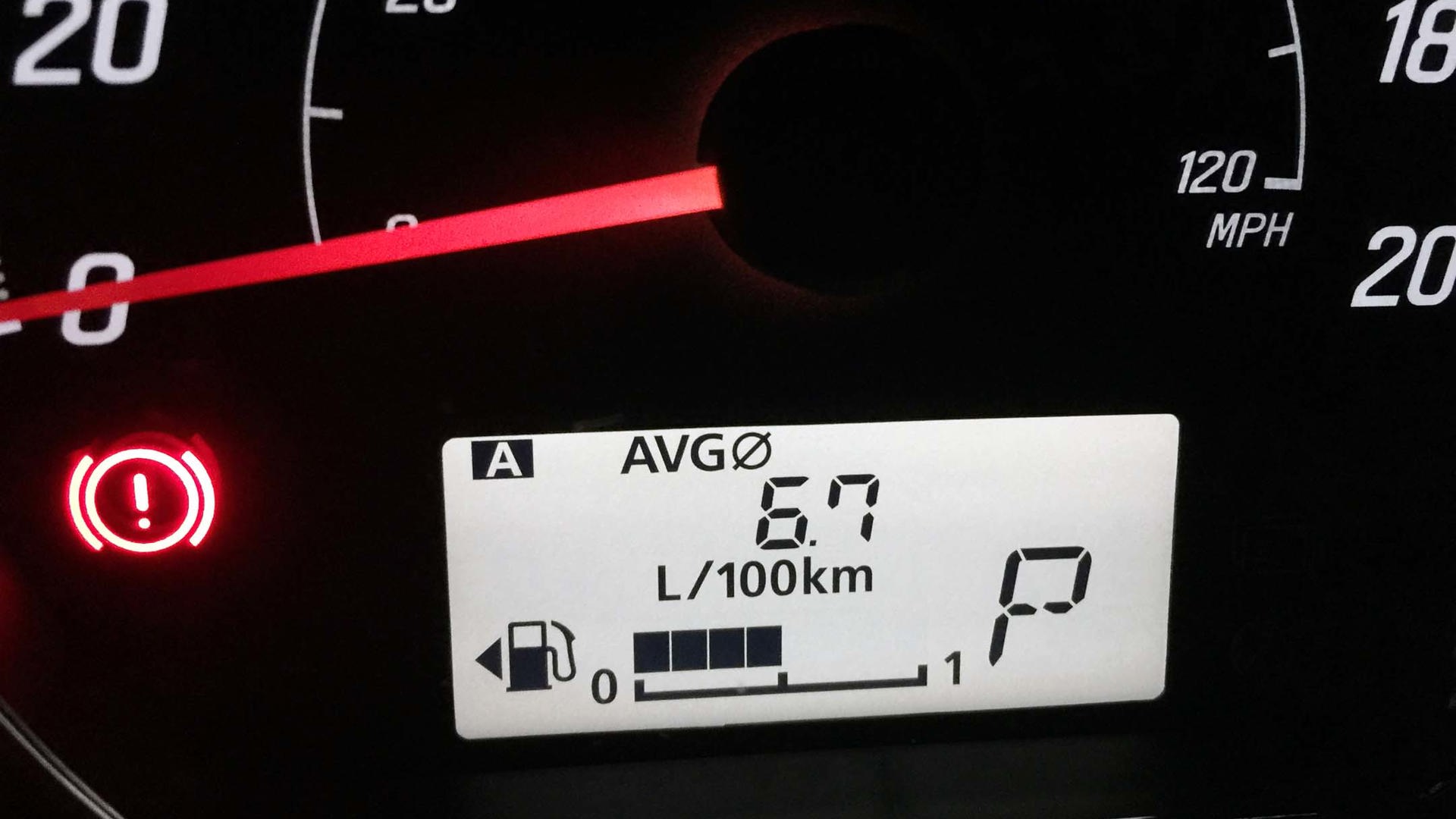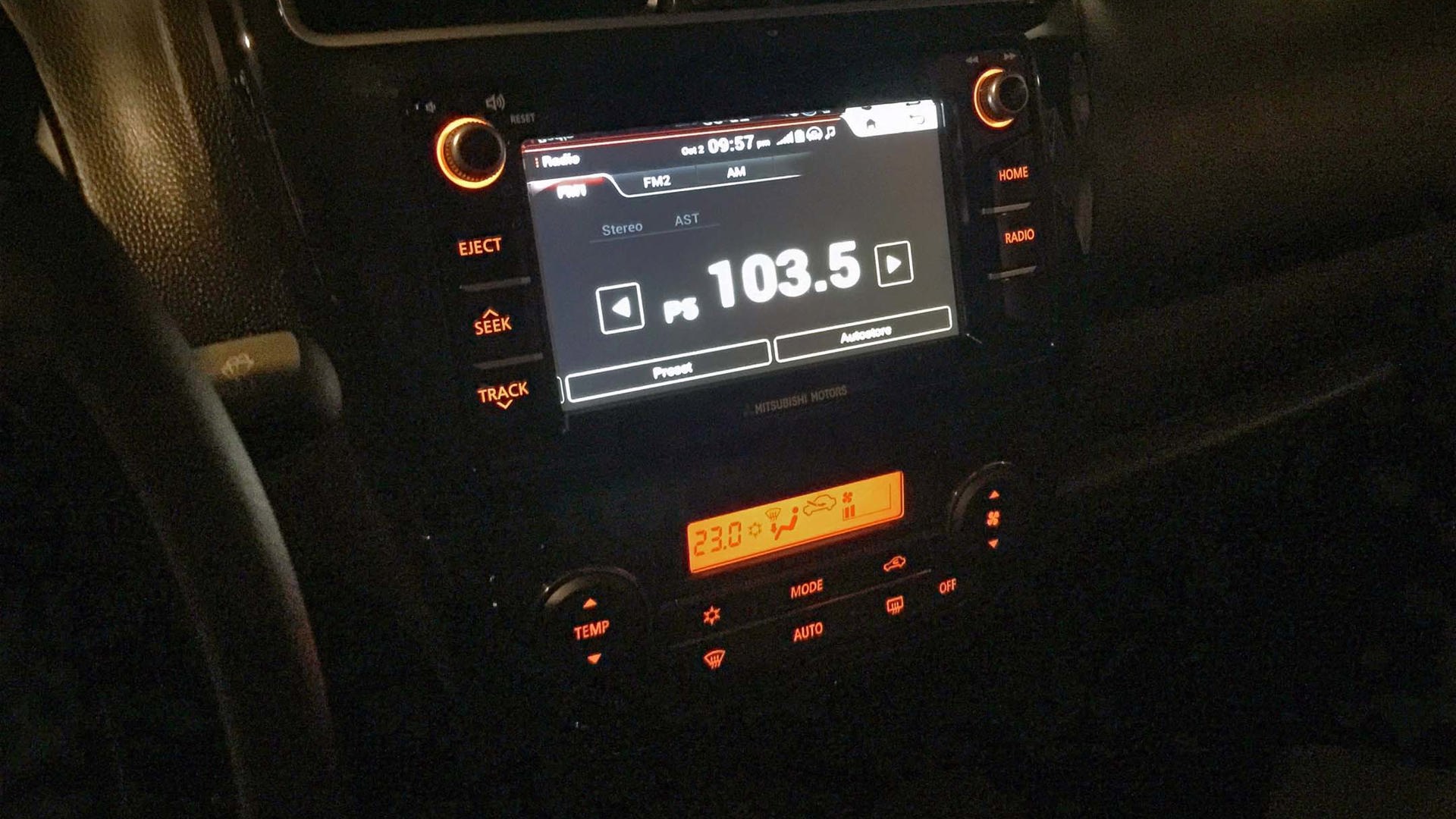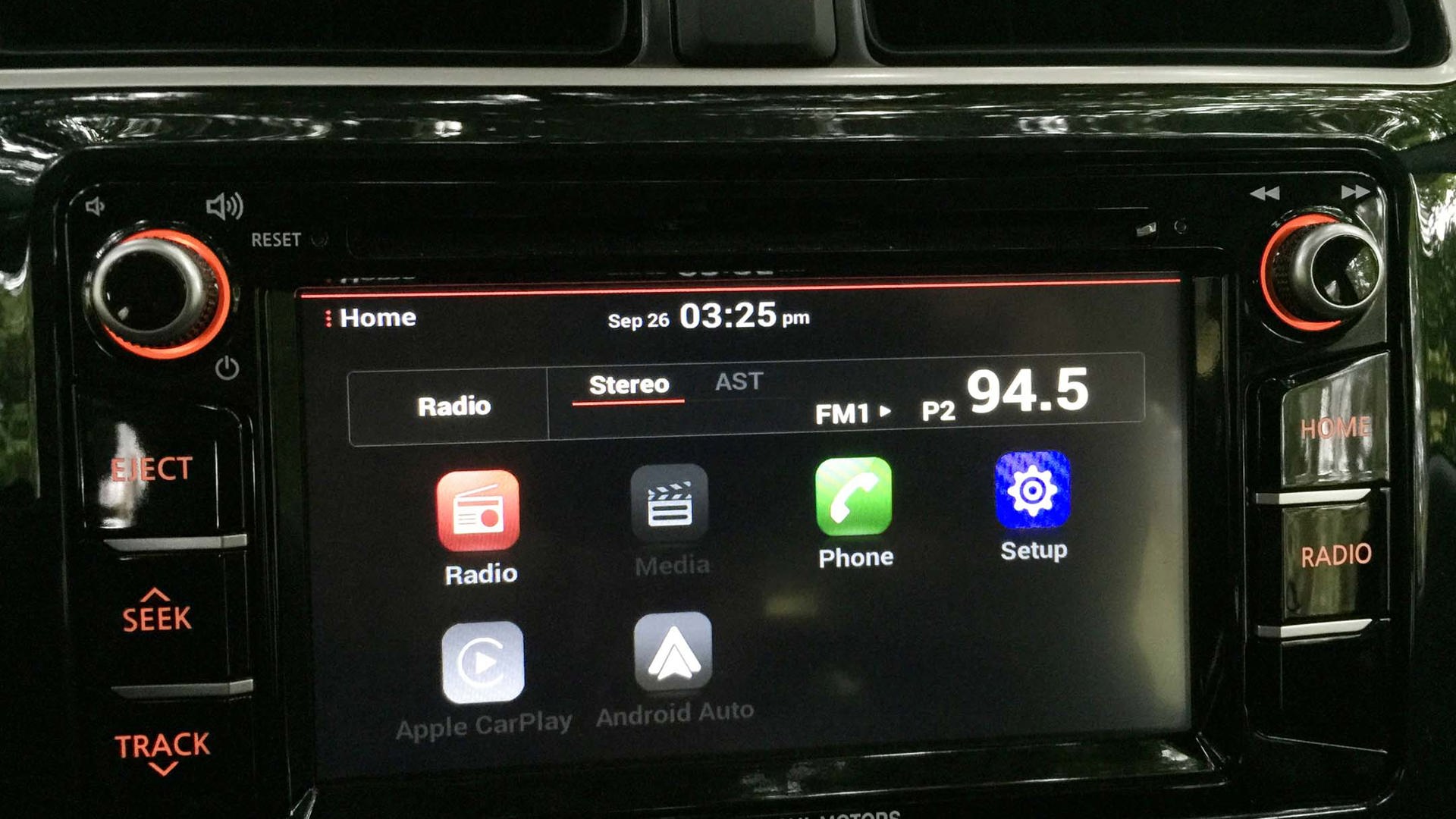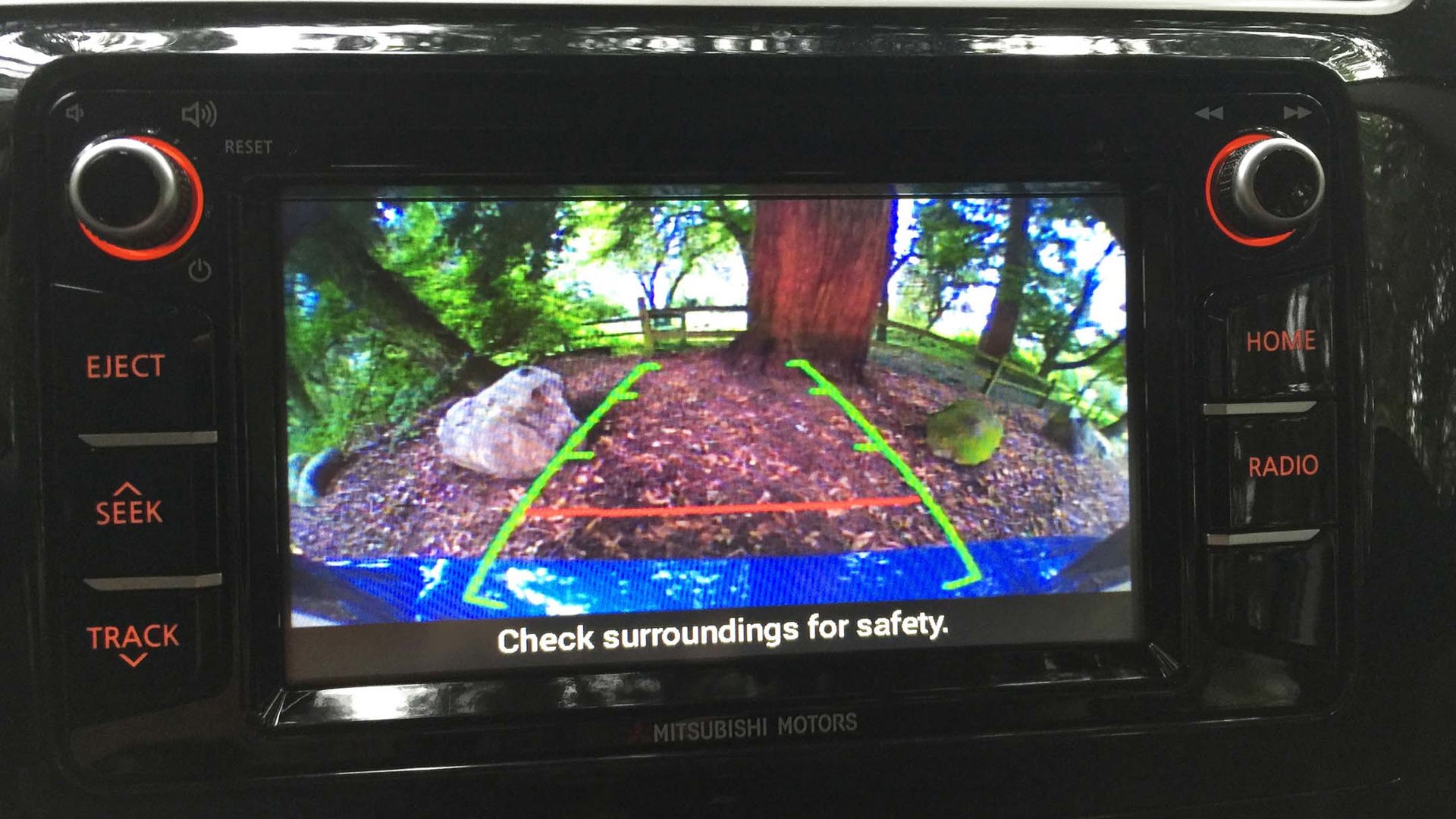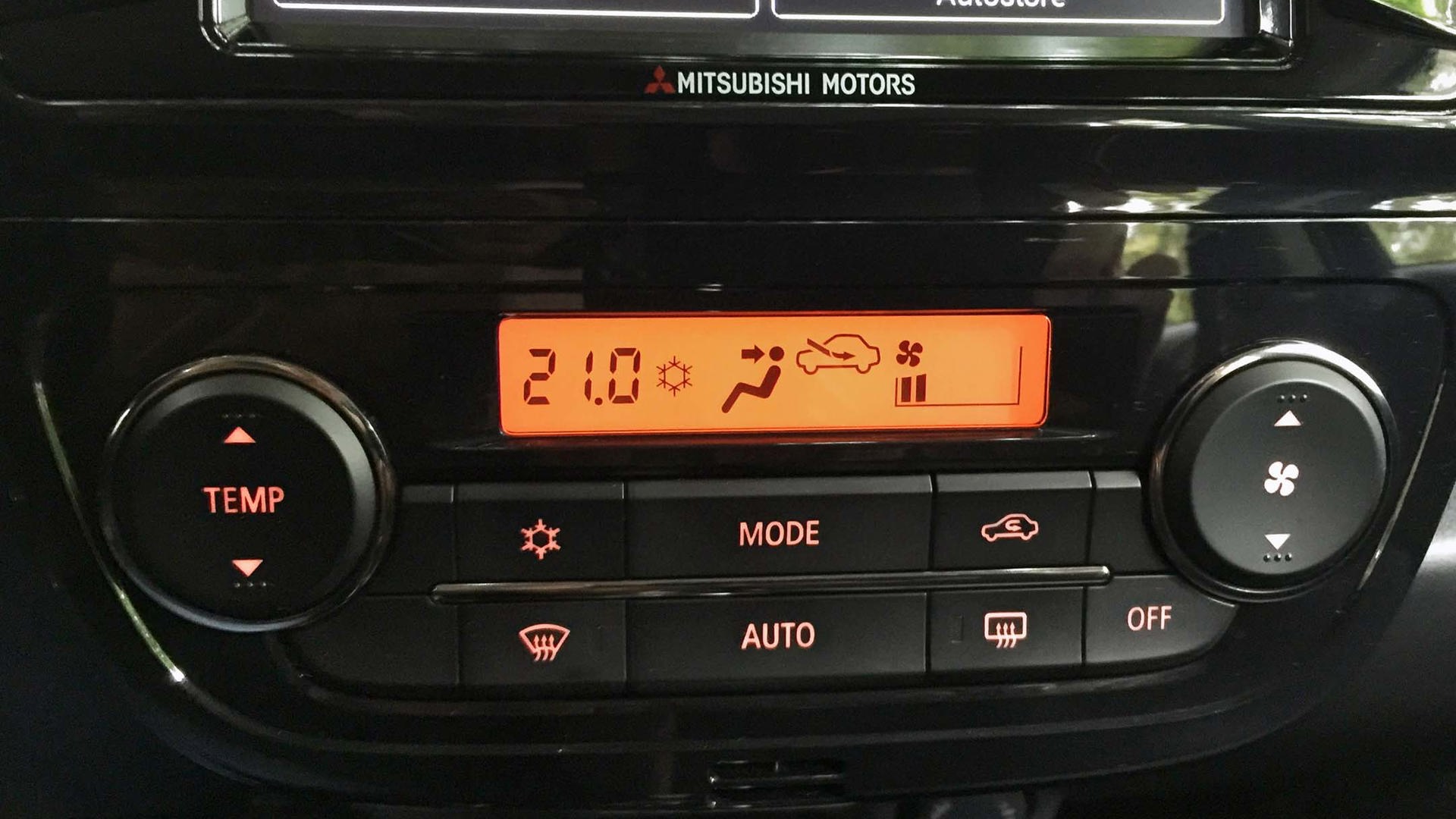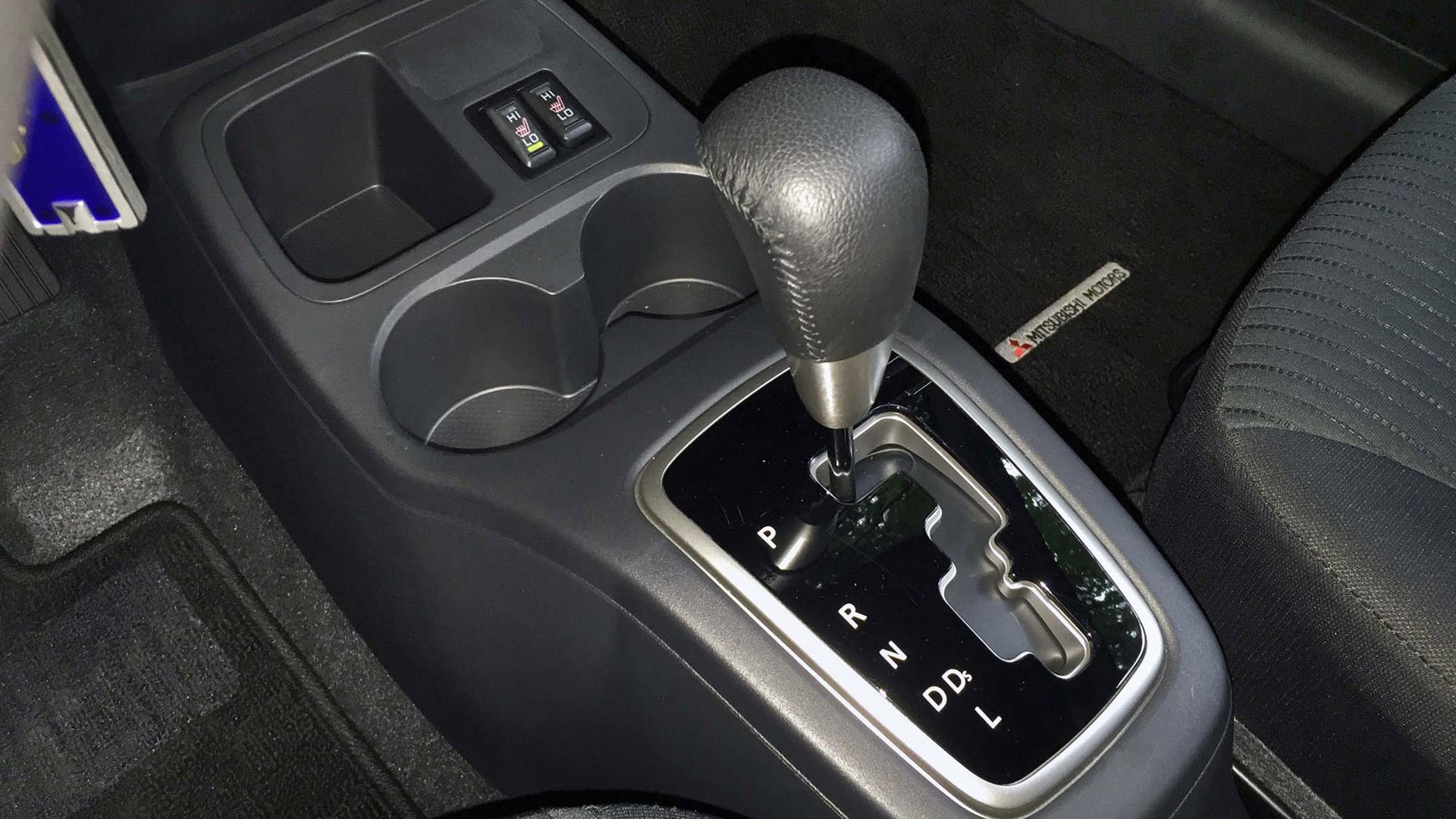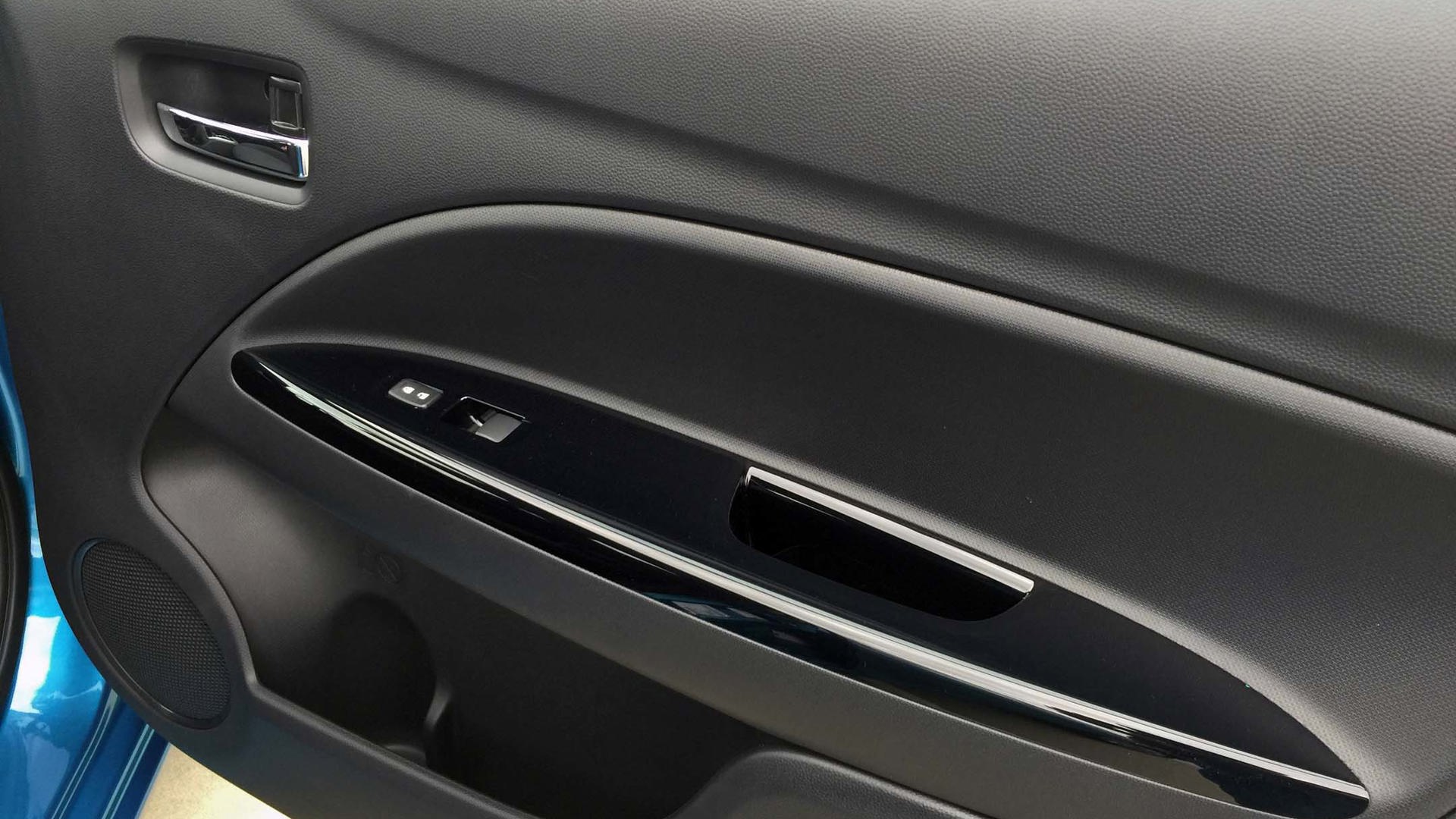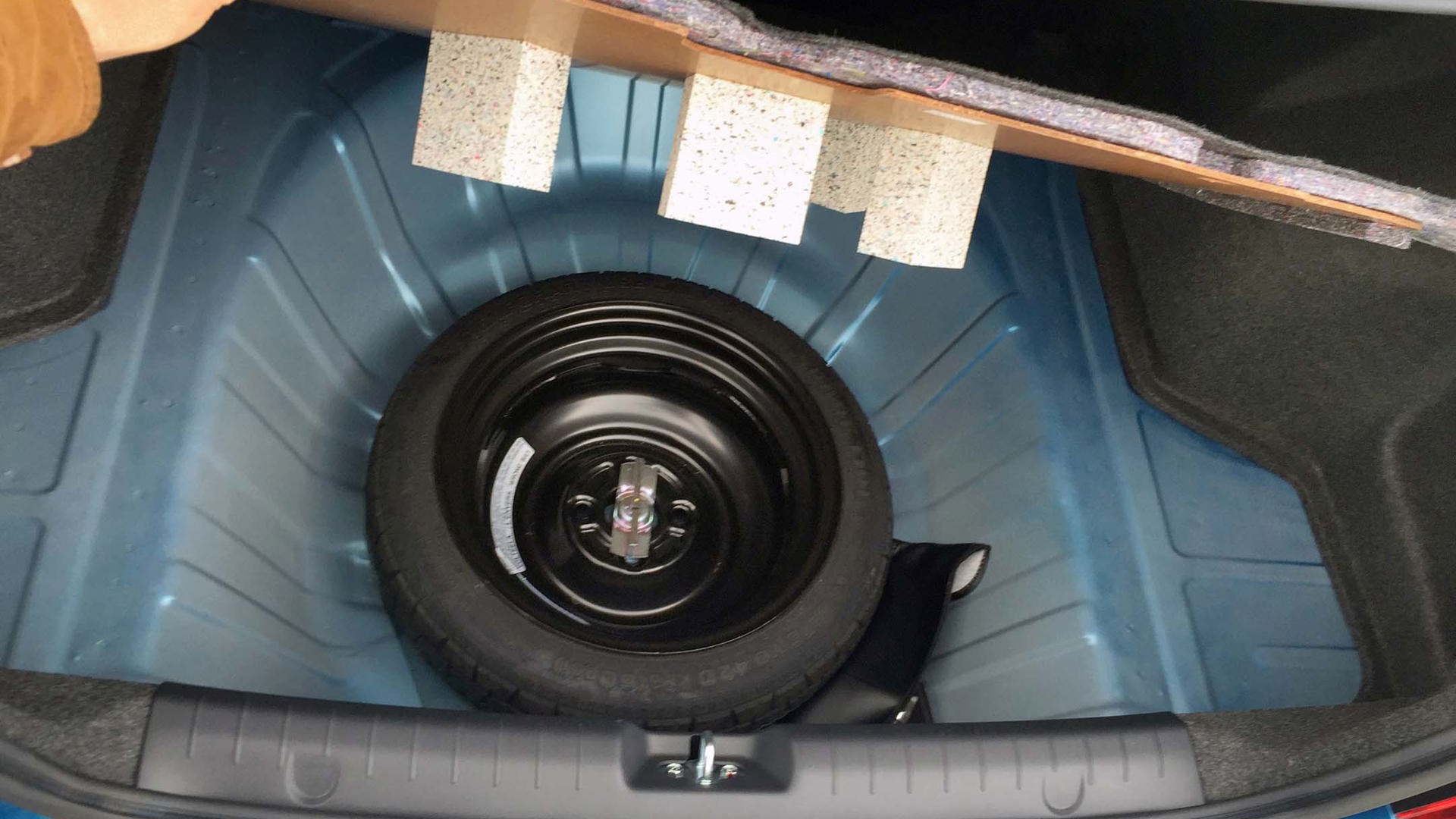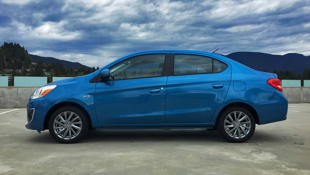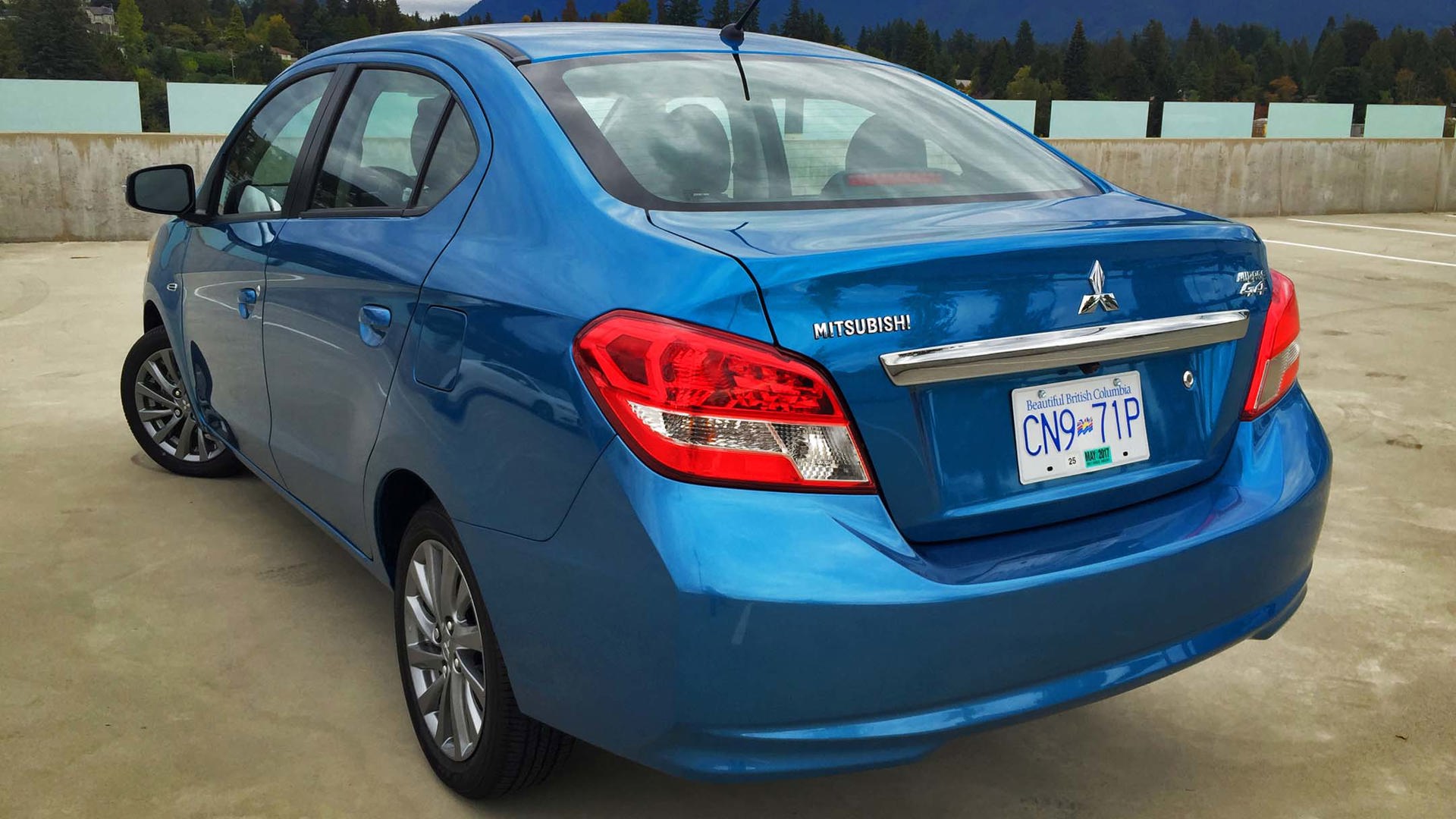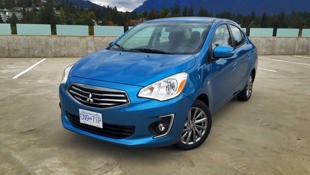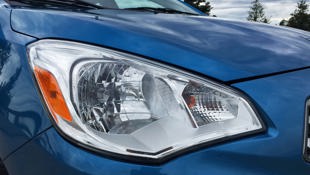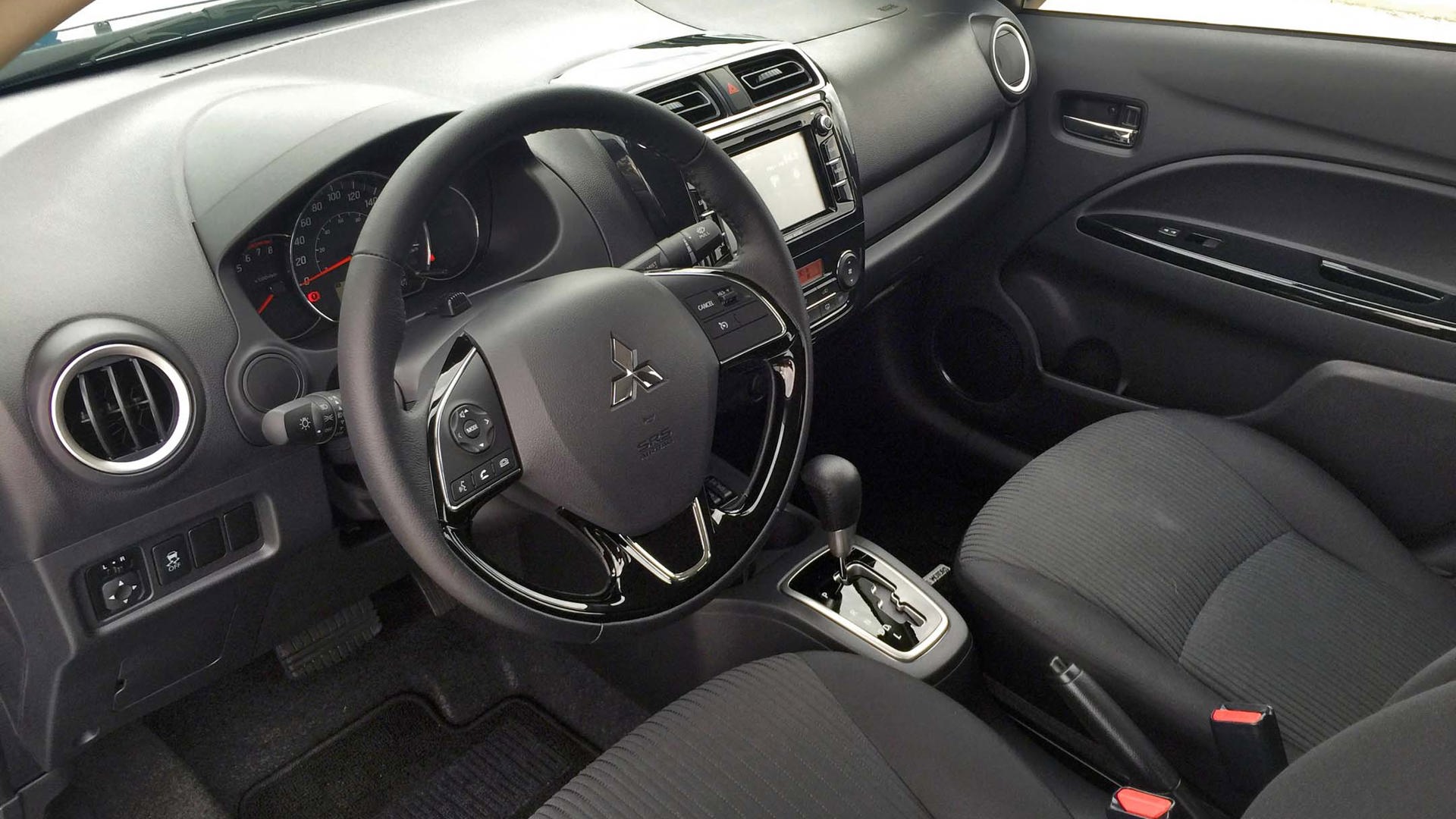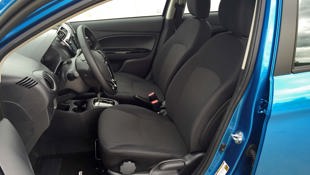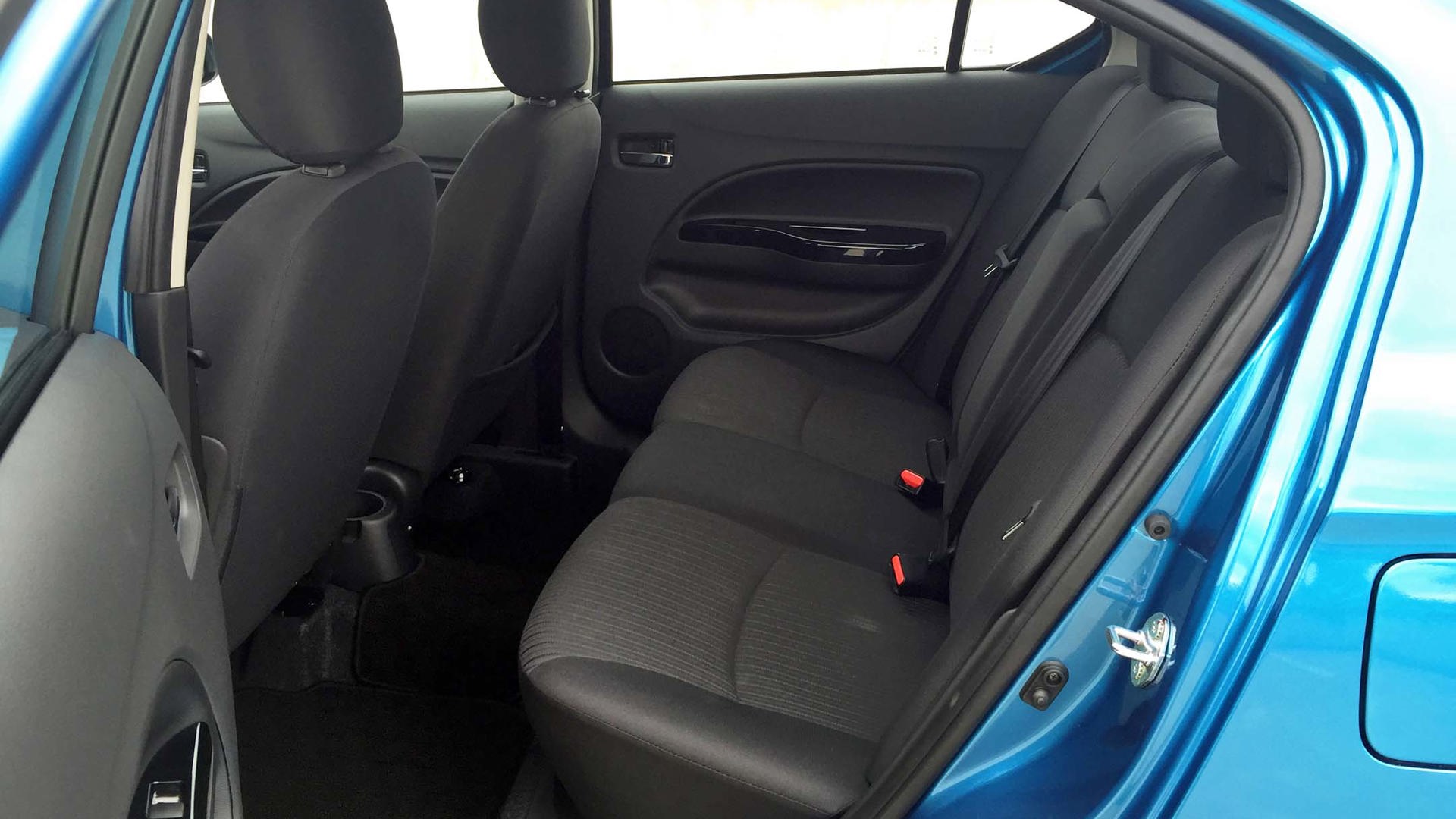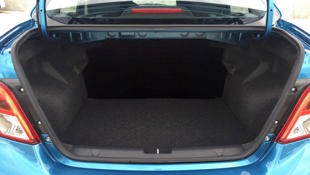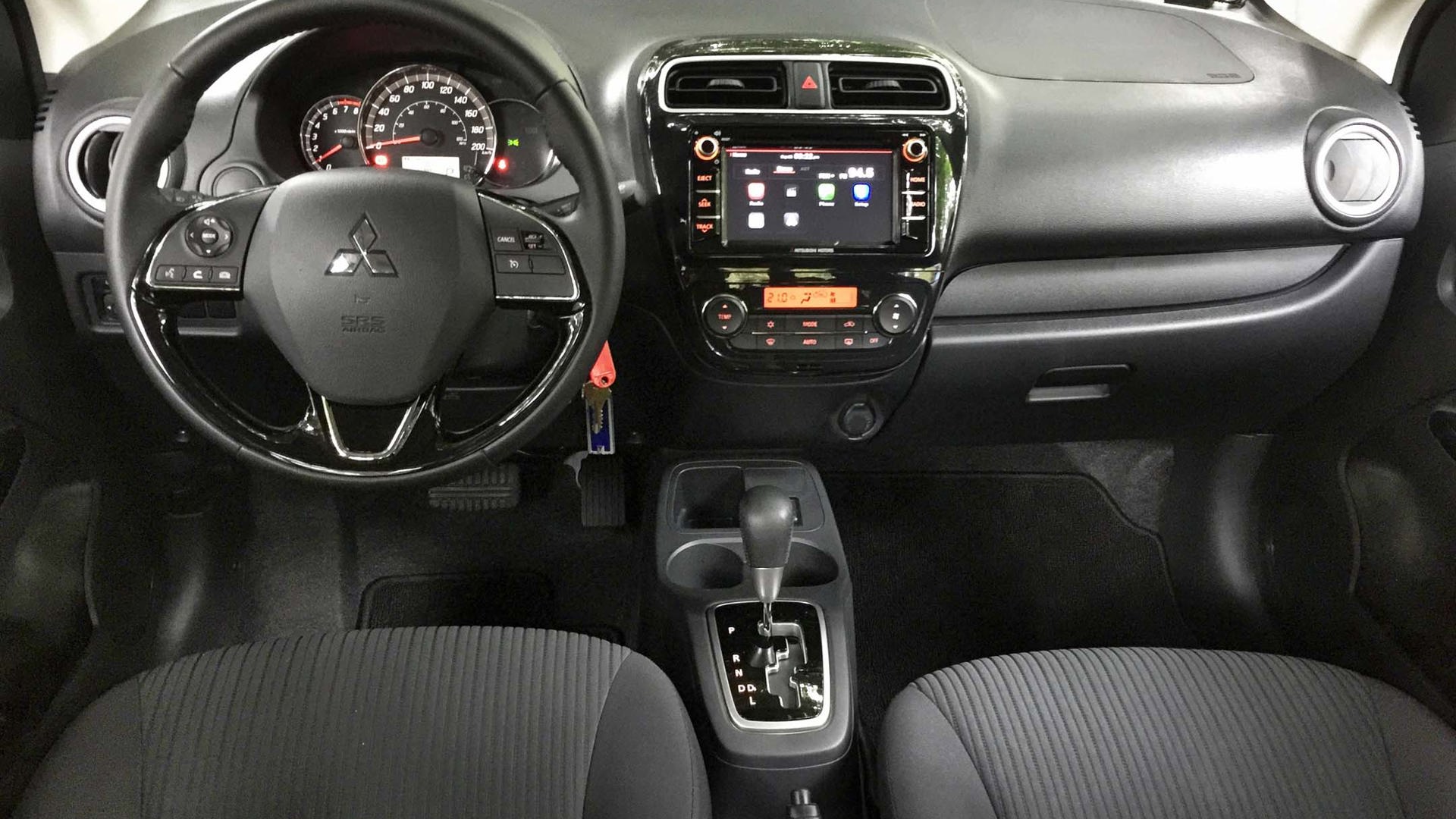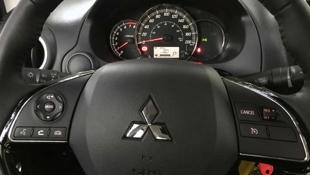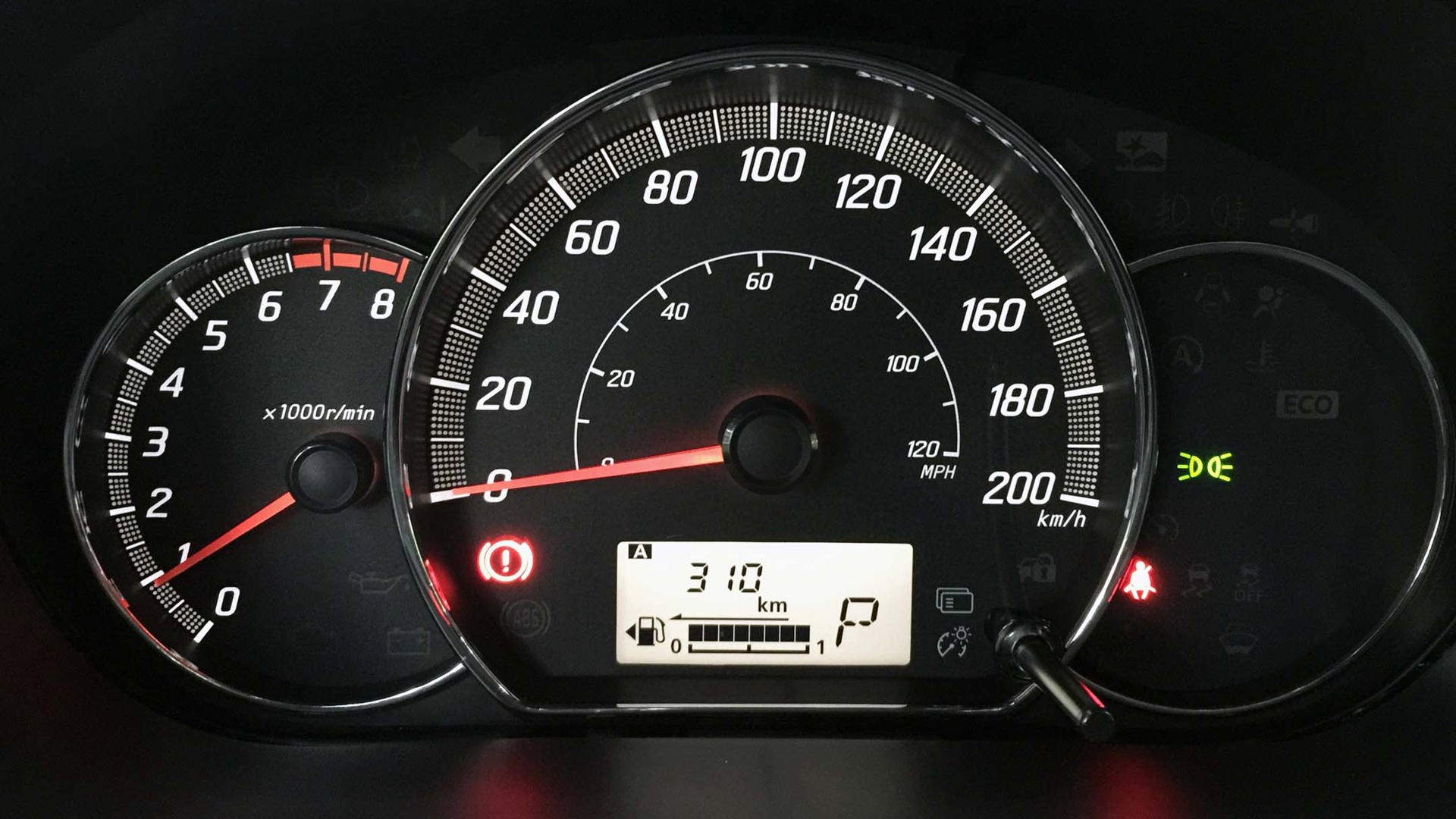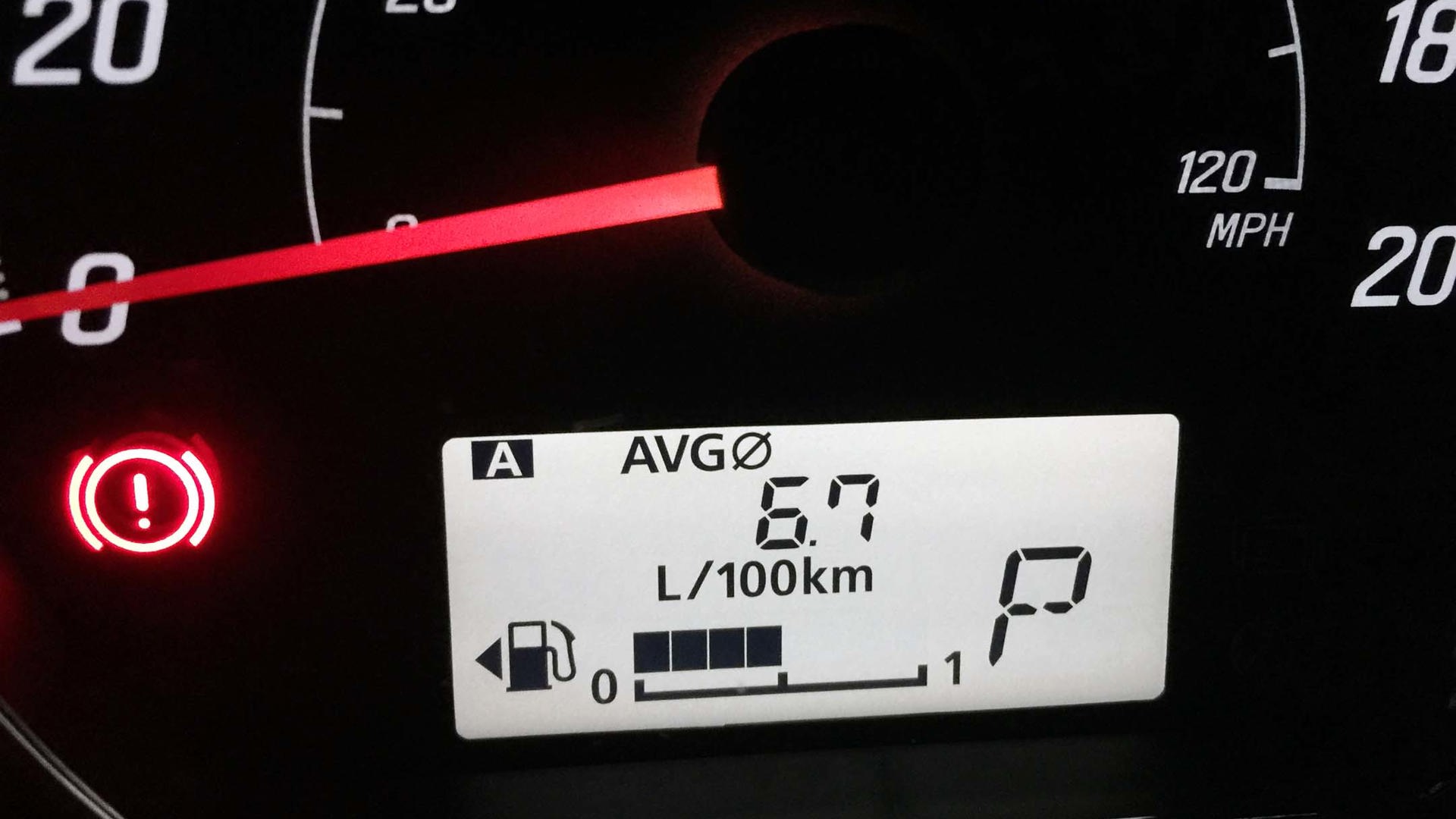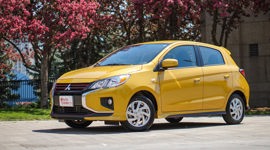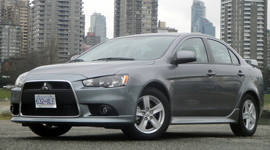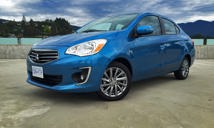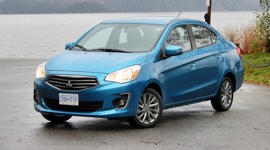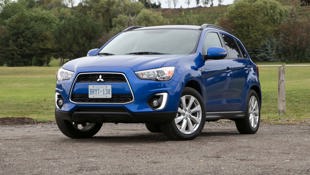 AutoTrader SCORE
AutoTrader SCORE
-
STYLING6/10
-
Safety6/10
-
PRACTICALITY7/10
-
USER-FRIENDLINESS7/10
-
FEATURES6/10
-
POWER5/10
-
COMFORT7/10
-
DRIVING FEEL7/10
-
FUEL ECONOMY8/10
-
VALUE8/10
For those of us who are frugal by nature, a new car that sells for under $15,000 is almost as exciting as Free Coffee Week at McDonalds. Starting at $14,498, the 2017 Mitsubishi Mirage G4 ES is one of the least expensive four-door sedans in Canada. The least expensive sedan in Canada right now is the 2017 Hyundai Accent L sedan priced at just $13,899; and at the time of this writing, Hyundai is even offering an additional $455 rebate! The Accent’s Korean cousin, the Kia Rio sedan, also starts under $15,000 at just $14,595.
The base Mitsubishi Mirage G4 ES sedan is not a stripped down loss-leader.
There are cheaper hatchbacks on the market too, such as the Chevrolet Spark ($9,998), the Nissan Micra ($9,998) and the Mitsubishi Mirage Hatchback ($12,698); but if you want four doors and a trunk, you’ll have to pay an extra one or two thousand.
The base Mitsubishi Mirage G4 ES sedan is not a stripped down loss-leader: it includes standard air conditioning, Bluetooth phone and streaming audio, power windows, power door locks and remote keyless entry, tilt/telescopic steering wheel, and trip computer. Also standard are an economical 1.2L three-cylinder engine, five-speed manual transmission, 14-inch all-season tires, a 140 watt AM/FM/CD audio system with four speakers, black fabric seats, variable intermittent wipers and seven airbags.
An obvious omission in the standard equipment list is folding rear seatbacks. They’re not available on the Mirage sedan even though the Mirage hatchback comes standard with 60/40 split folding rear seatbacks.
Like all Mitsubishis, the Mirage G4 sedan comes with the best warranty available: 5 years/100,000 km on the whole car, 10 years/160,000 km powertrain warranty, and 5 years/unlimited mileage roadside assistance.
For 2017, Mitsubishi’s 1.2-litre three-cylinder engine with four valves per cylinder, dual overhead camshafts and MIVEC (Mitsubishi Innovative Valve timing Electronic Control) variable valve timing adds new roller type camshafts that have increased horsepower from 74 to 78.
As you would expect, fuel economy is very good. With the standard 5-speed manual transmission, NRCan fuel consumption ratings are 7.2 L/100 km city / 5.9 highway / 6.6 combined. With the continuously variable transmission (CVT), fuel economy is even better: 6.9/5.7/6.4 L/100 km city/highway/combined. During my December test drive, I averaged 6.7 L/100 km in a 50/50 mix of city/highway driving.
But with just 78 horsepower, performance can be sluggish even though the Mirage sedan weighs only 950 kg (base model). Performance is adequate around town but it struggles going up steep hills and seems underpowered when accelerating onto the freeway. It’s one of the few vehicles I’ve driven where I can put my foot flat to the floor and still wish for more power. Its 0 to 100 km/h time of 14 seconds is slow when compared to other small sedans. The Hyundai Accent and Kia Rio sedans, for example, have a standard 1.6-litre 4-cylinder engine with 137 horsepower and six-speed manual transmission. Each can zip to 100 km/h in roughly 9 seconds.
As well, the Mirage’s three-cylinder engine is growly and industrial-sounding when accelerating, in part because there seems to be minimal sound insulation. But at a steady speed, it’s hardly audible, turning over just 2,200 rpm at 100 km/h on the freeway. There is a lot of road and tire noise though.
The CVT prolongs higher engine revs under acceleration but during normal around-town acceleration, droning isn’t excessively noisy. In addition to D (Drive), the transmission has an additional Drive-Sport (DS) mode which acts like a lower gear to increase engine revs. Even so, it doesn’t seem to improve performance but it does increase engine noise.
For 2017, Mitsubishi changed the spring rates and damping forces of the shock absorbers to help improve handling. Handling is adequate for typical commuting, but due to its tall body, skinny tires, and narrow track, the Mirage G4 sedan feels a bit tippy when cornering quickly. Our SEL test car had Yokohama 175/55R15 all-season tires on multi-spoke alloys but Mirage ES models have even narrower 165/65R14-inch tires.
The front disc brakes and rear drum brakes were also enlarged for 2017 and the brakes proved sufficiently powerful for a car that weighs so little.
Steering feel is light without much feedback, but the Mirage G4 sedan is easy to park and has a really tight turning diameter of just 9.6 metres, slightly better than the Toyota Yaris sedan with 9.8 metres. Outward visibility is excellent, except for some obstruction by the two fixed rear head restraints. SEL models have a rearview camera but safety features like blind-spot warning and lane-departure warning are not available.
Though it shares a similar platform and drivetrain with the Mirage Hatchback, the Mirage G4 sedan is a full 510 mm longer and has a wheelbase that’s 100 mm longer. As a result, the sedan’s cabin is considerably roomier than the hatchback’s, particularly rear seat legroom.
Compared to other small 4-door sedans, the Mirage G4 is slightly shorter and narrower. It’s a bit smaller than the Toyota Yaris sedan which in turn is slightly smaller than the Hyundai Accent sedan and Ford Fiesta sedan.
Still, the Mirage sedan’s tall but narrow bodystyle offers a surprising amount of legroom and headroom. The Mirage G4 sedan’s wheelbase is 61 mm longer than the Fiesta sedan’s, and only 20 mm shorter than the Yaris and Accent sedans. As well, the Mirage G4 sedan is 20 mm taller than its tallest competitor, the Yaris sedan.
With a tall roof, four doors and a low step-over height, it’s easy for passengers to get in and out, but rear passengers must duck under the sloping roofline. The driver sits up tall with good visibility outwards and a clear view of the instruments and controls. Top-of-the-line SEL models have a height adjustable driver’s cushion but the front passenger seat is not height adjustable. SEL models also have Hi/Lo front seat heaters.
The Mirage sedan’s dash design is simple and straightforward: a large central illuminated speedometer and digital trip computer are flanked by a smaller tachometer and warning lights cluster. Base SE models have standard black cloth seats and a urethane steering wheel and shift knob but the SEL adds premium black cloth upholstery, leather-wrapped steering wheel and shift knob, silver trim around the vents and volume knob, chrome door handles, and piano black trim around the centre dash, shift lever, door armrests and lower steering wheel.
I’m not a big fan of glossy piano black trim. It scratches easily and I noticed that the piano black trim on the driver’s armrest of our test car was already scratched.
Mirage SEL sedans include a centre touch-screen with a home-screen that includes ‘tiles’ for Radio, Phone, Media, Setup, Apple CarPlay and Android Auto. The screen is also surrounded by illuminated dials and ‘hard’ buttons for Volume, Tune, Home, Radio, Eject, Seek and Track. It’s easy to use and my only complaint is that the screen washes out under the Sun’s glare at times.
Mirage SEL models also have steering wheel controls for telephone, voice activation, audio volume and Seek, and cruise control.
All Mirage G4 sedans have four power windows with driver’s automatic down feature, power side mirrors, and power door locks with remote unlocking and locking, except the trunk.
Phones can be charged with a 12-volt power outlet in the lower centre console, and plugged into Apple CarPlay or Android Auto via a USB connector in the glovebox.
Interior storage is limited to a glovebox, a small square bin in front of the shift lever, door pockets, and a map pocket on the back of the front passenger seat. There is no centre storage bin or armrest.
The outboard rear seats are surprisingly roomy for two adults but the cabin is too narrow for three adult passengers in the rear. Outboard passengers have plenty of knee room and lots of foot room under the raised front seats and rear headroom is adequate. A rear folding centre armrest includes two cupholders. There are two rear fixed head restraints but no centre rear head restraint.
The Mirage sedan’s fully lined 348-litre trunk is quite roomy but it’s not quite as big as the trunks of the Yaris (382 L), Fiesta (363 L) and Accent (389 L) sedans. A temporary spare tire resides under the Mirage trunk’s floor.
Though the 2017 Mitsubishi Mirage G4 sedan is priced about $1,000 to $2,000 less than its major competitors, it’s also smaller, less powerful and only slightly more fuel efficient. Nevertheless, if you’re looking for an economical well-equipped four-door sedan with a great warranty under $20,000 (including Freight and PDI), the Mirage G4 SEL sedan is worth a look.
The Mitsubishi Mirage G4 sedan is built in Laem Chabang, Thailand.
| Engine Displacement | 1.2L |
|---|---|
| Engine Cylinders | 3 |
| Peak Horsepower | 78 hp @ 6,000 rpm |
| Peak Torque | 74 lb-ft @ 4,000 rpm |
| Fuel Economy | 6.9/5.7/6.4 L/100 km cty/hwy/cmb |
| Cargo Space | 348 L |
| Model Tested | 2017 Mitsubishi Mirage G4 SEL CVT |
| Base Price | $18,298 |
| A/C Tax | $ 100 |
| Destination Fee | $ 1,450 |
| Price as Tested | $19,848 |
|
Optional Equipment
None
|
|
